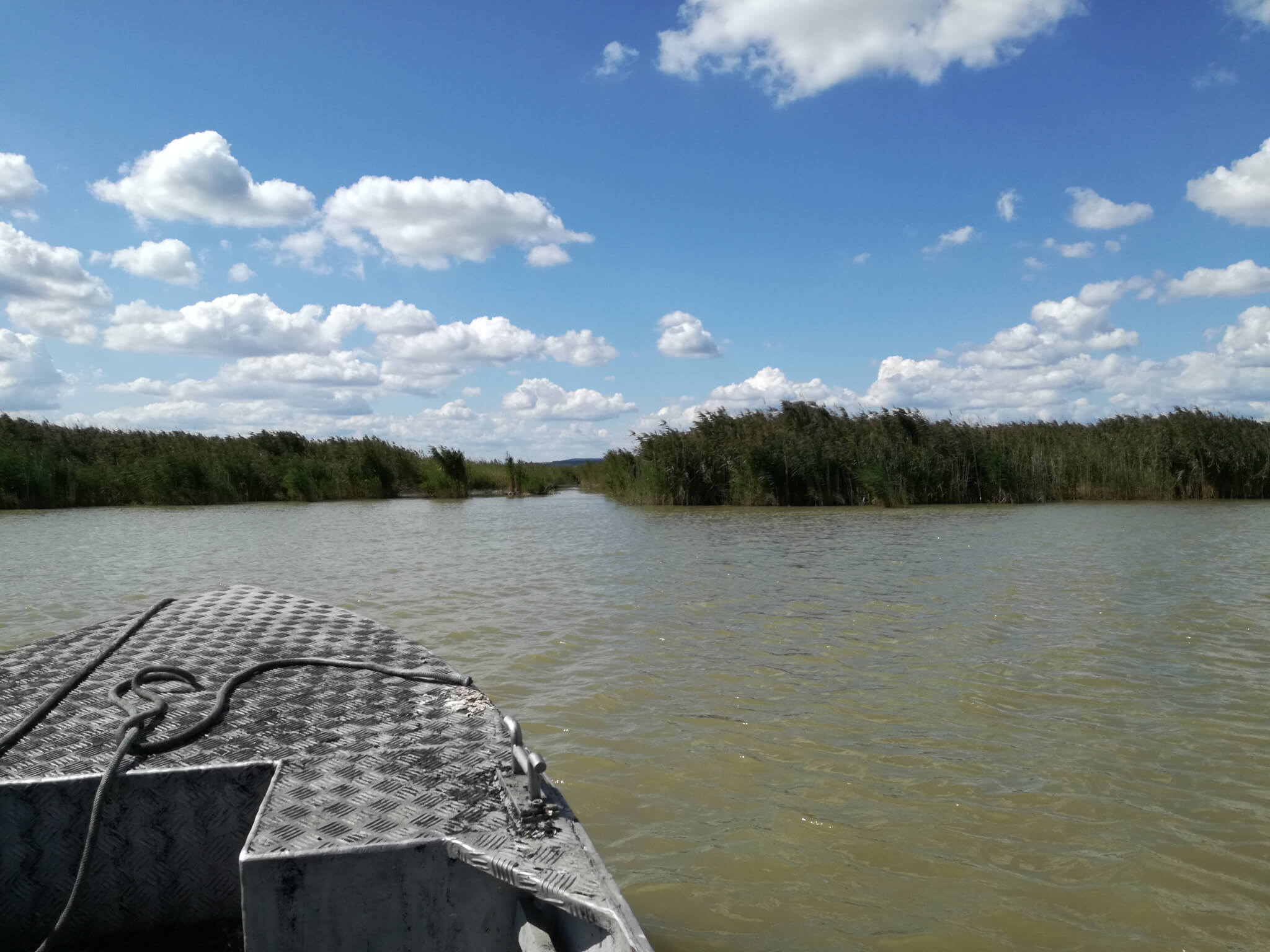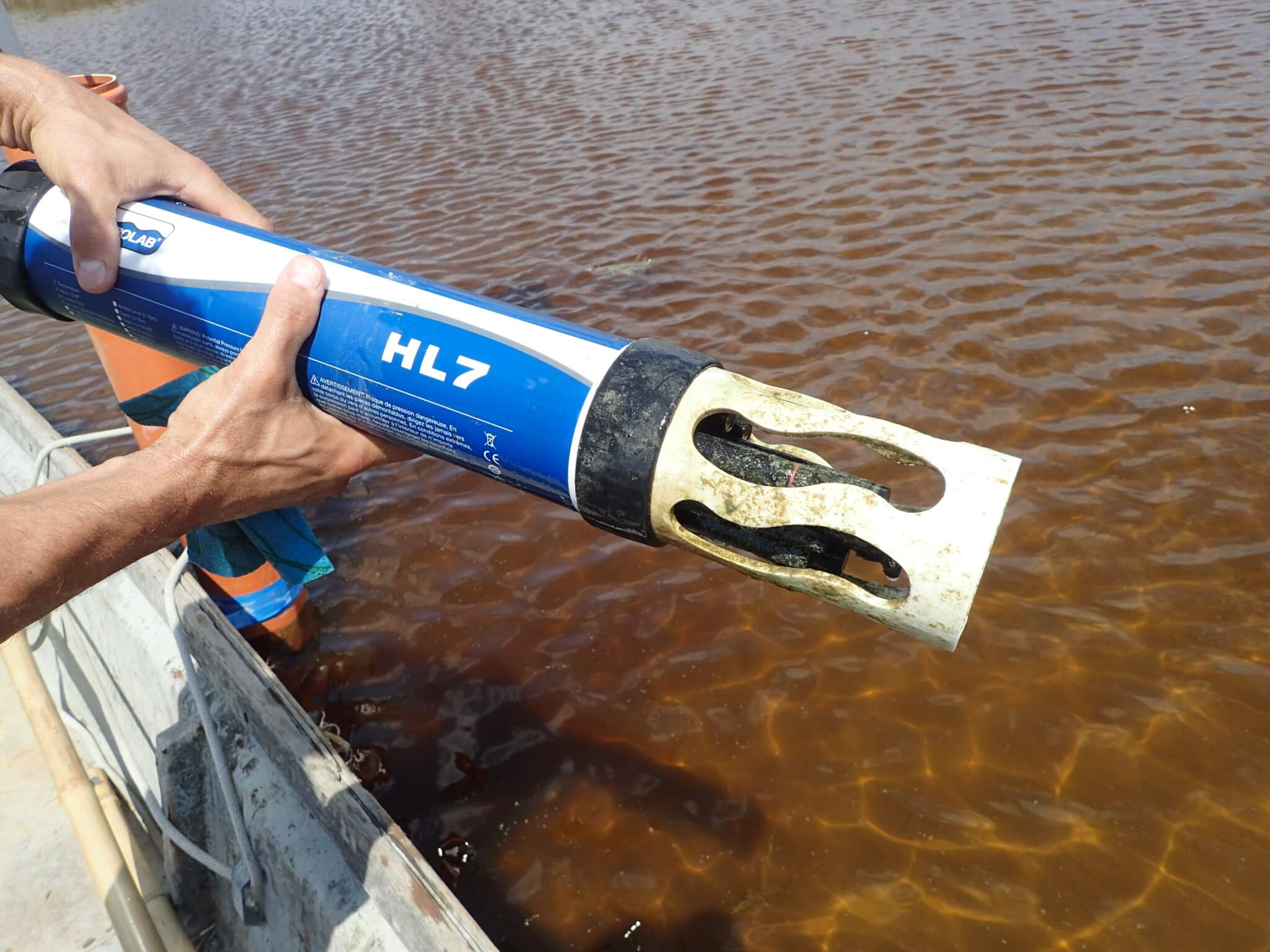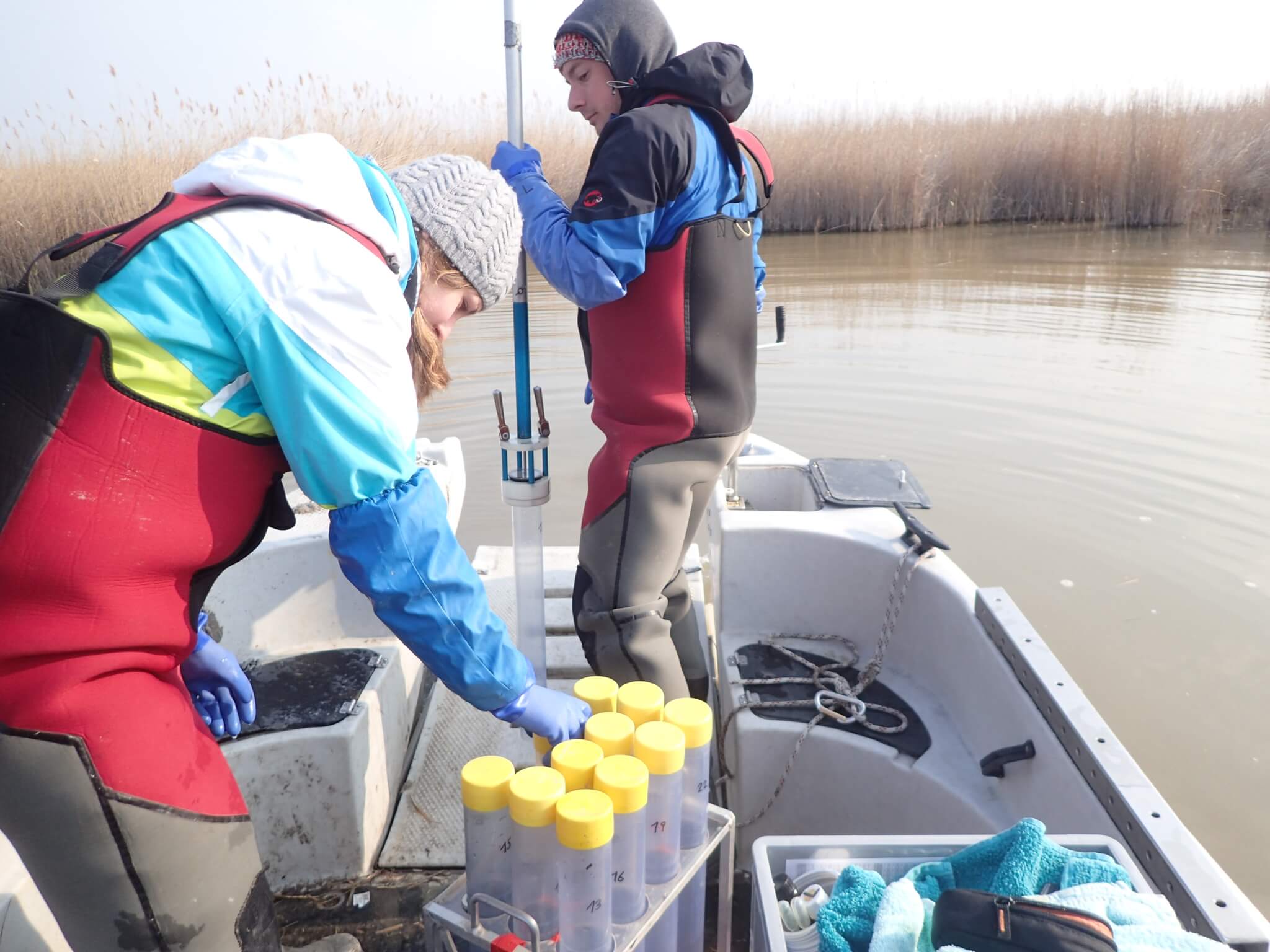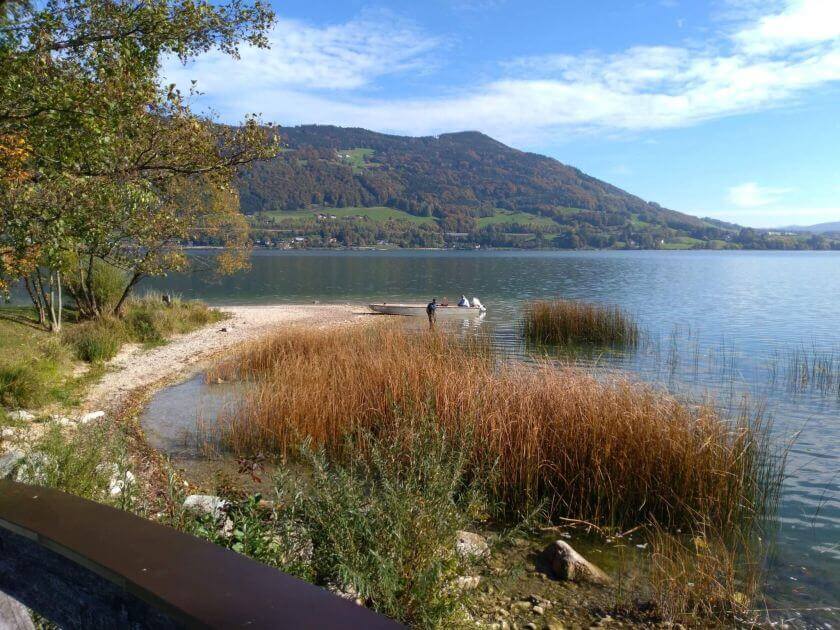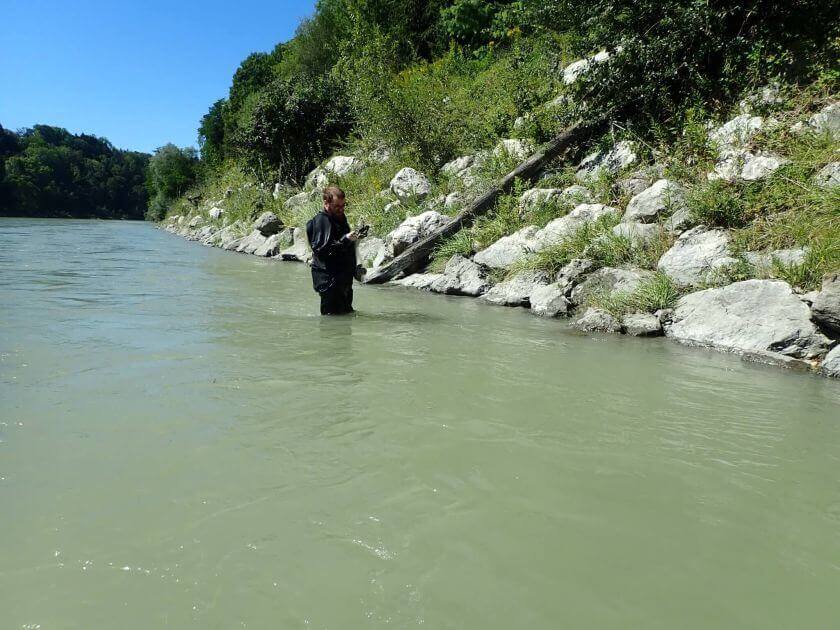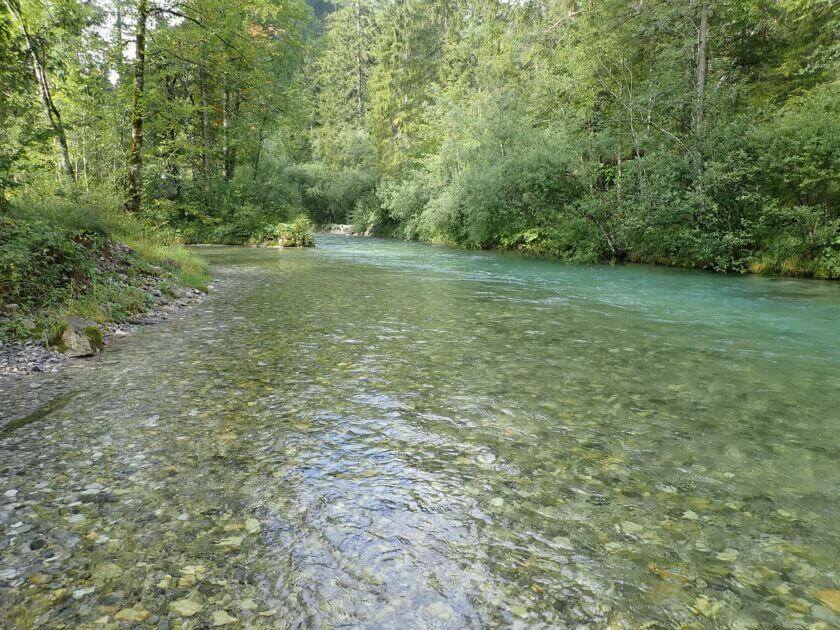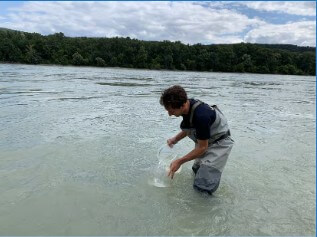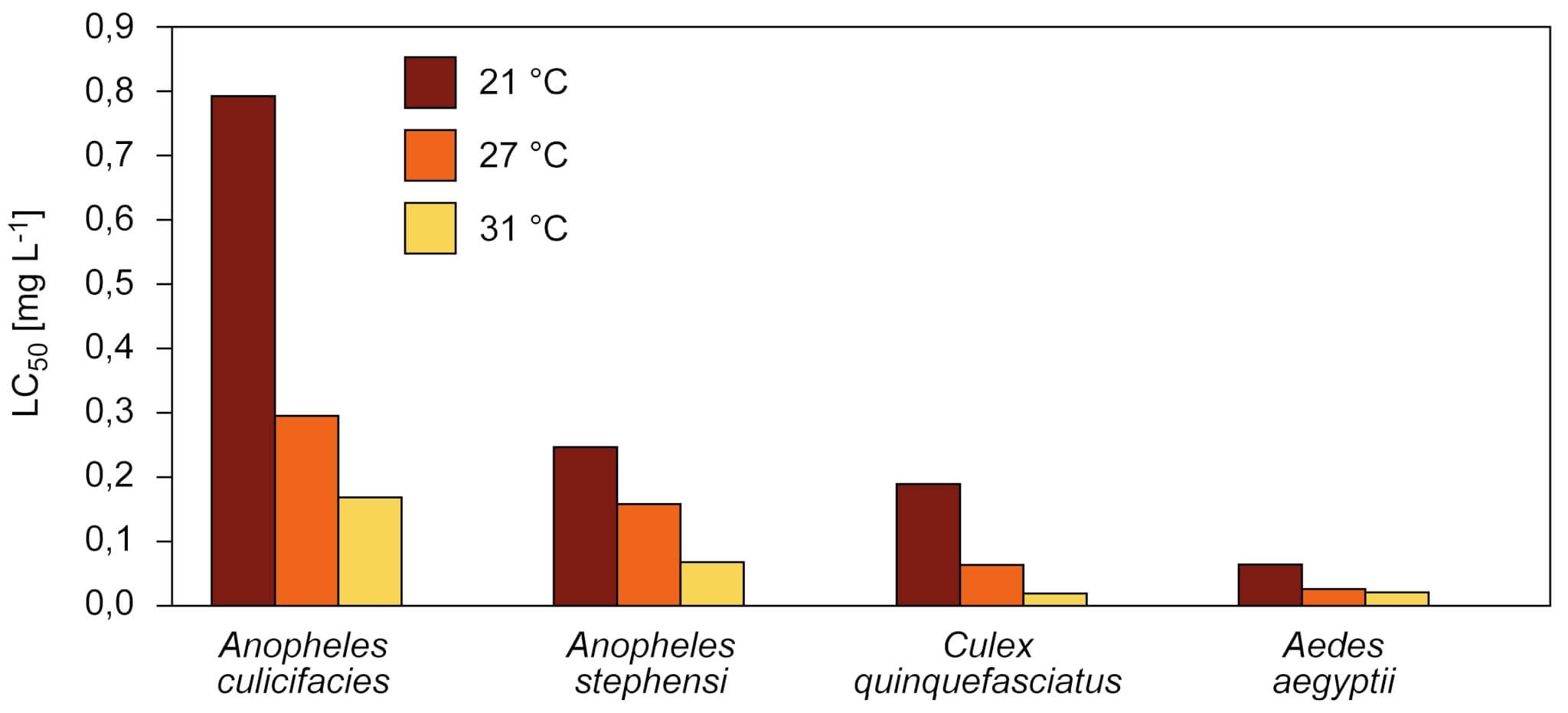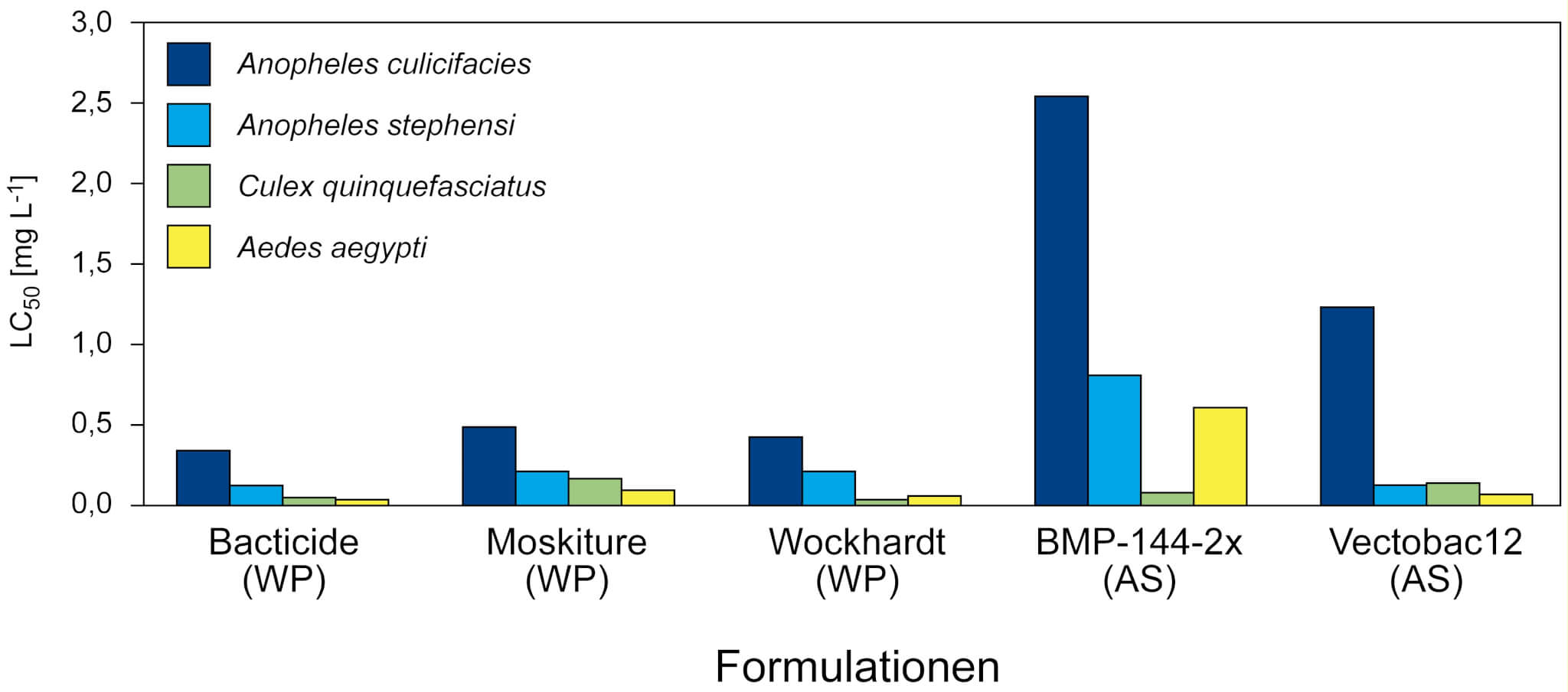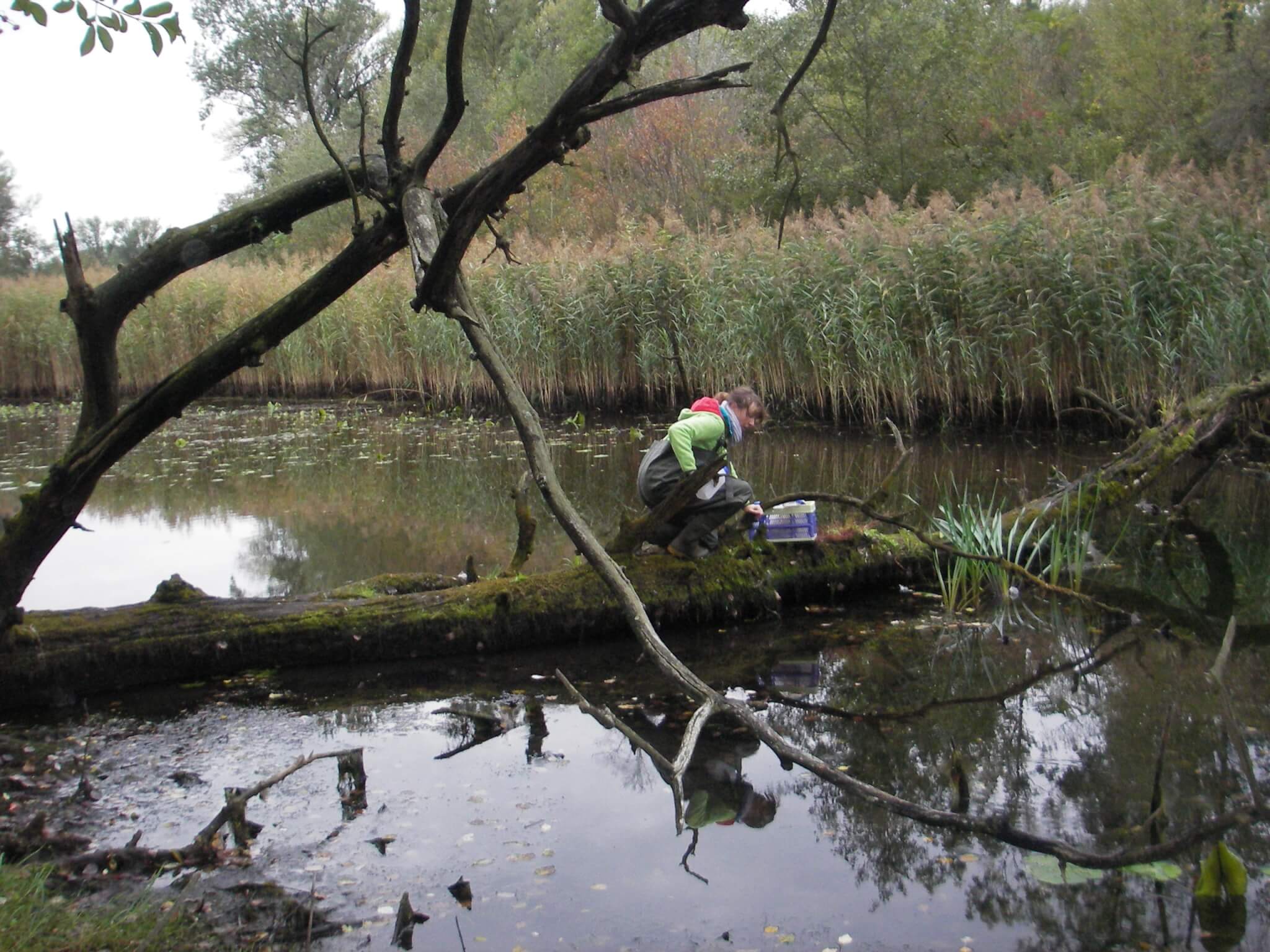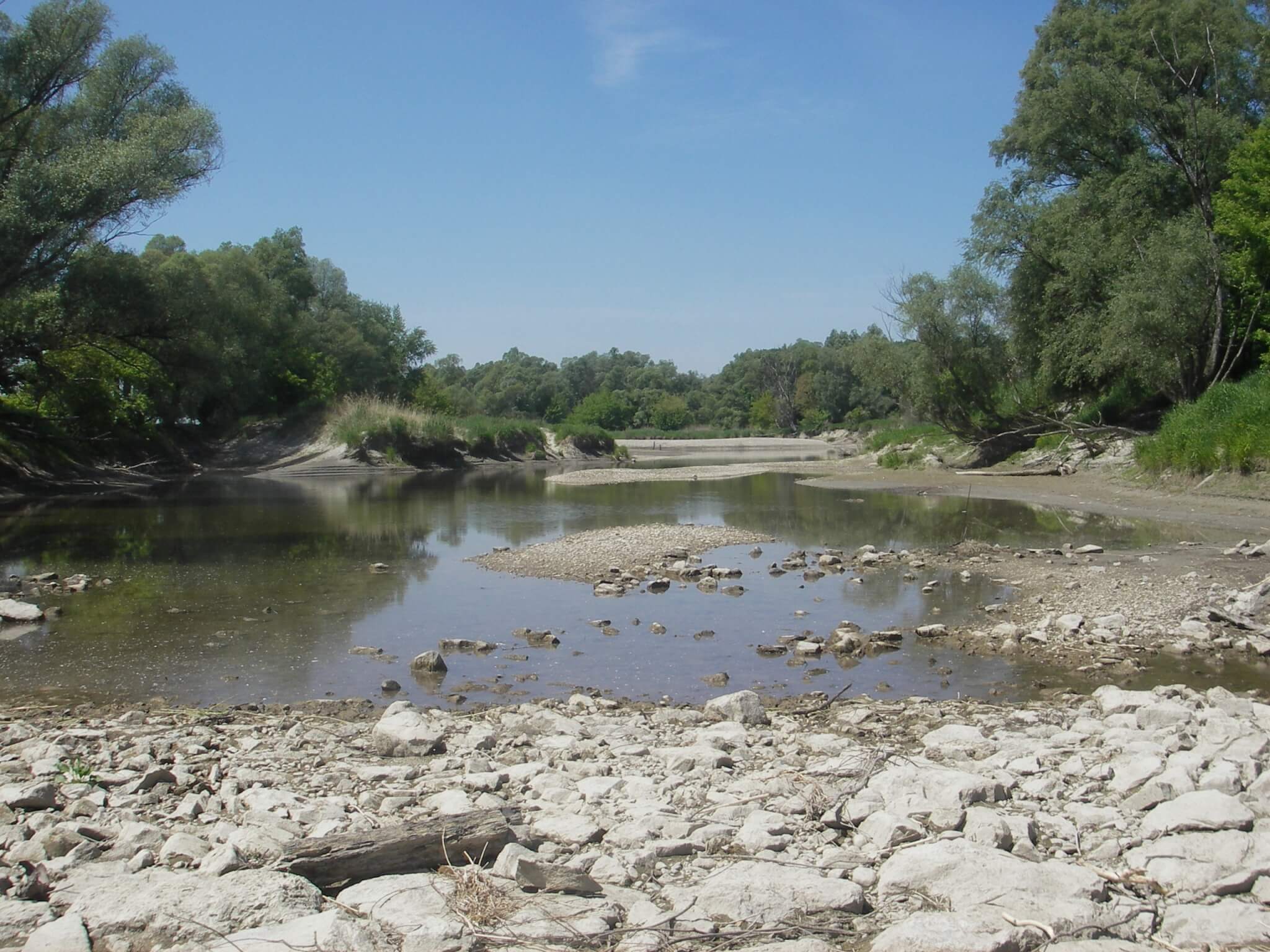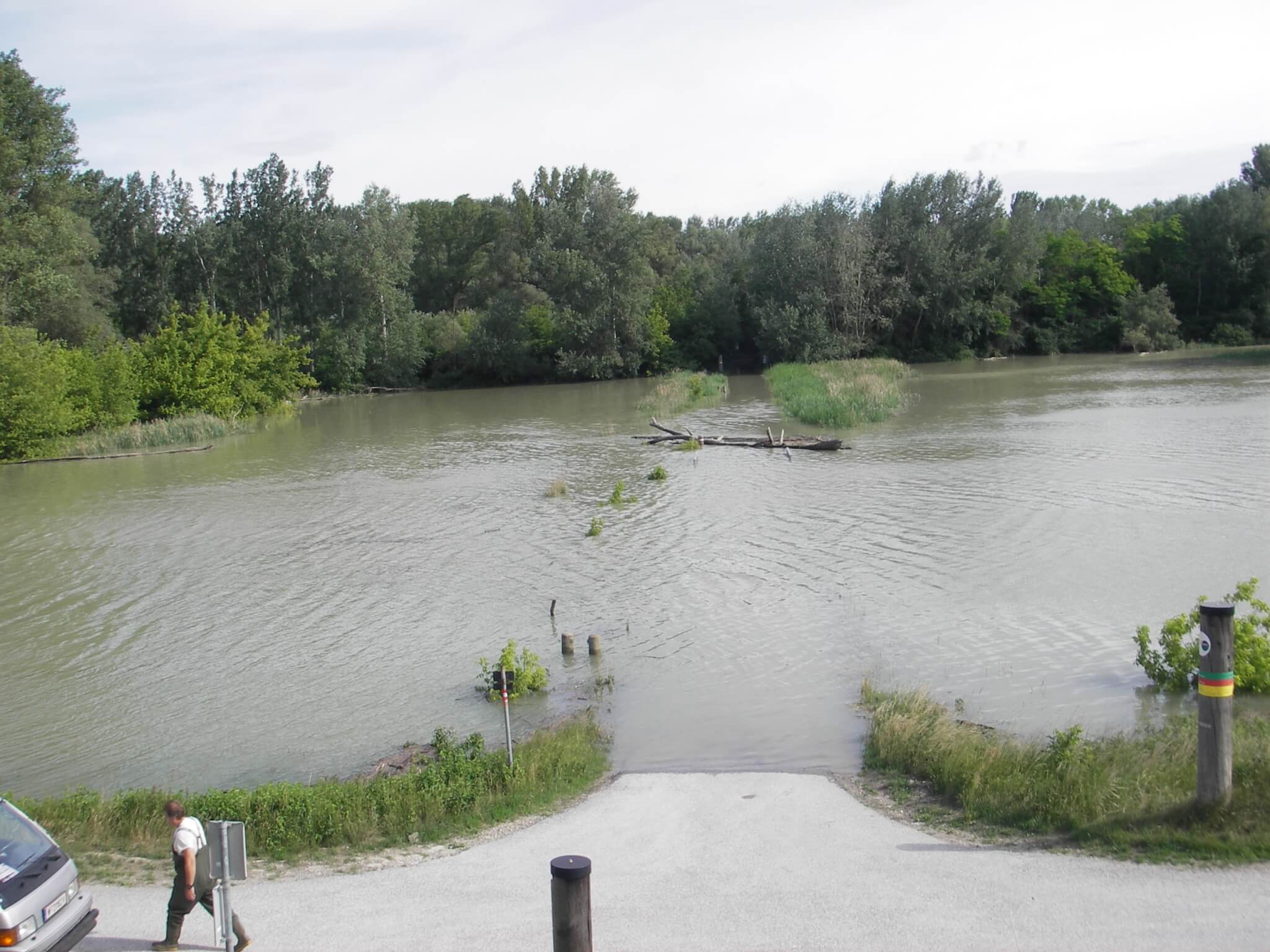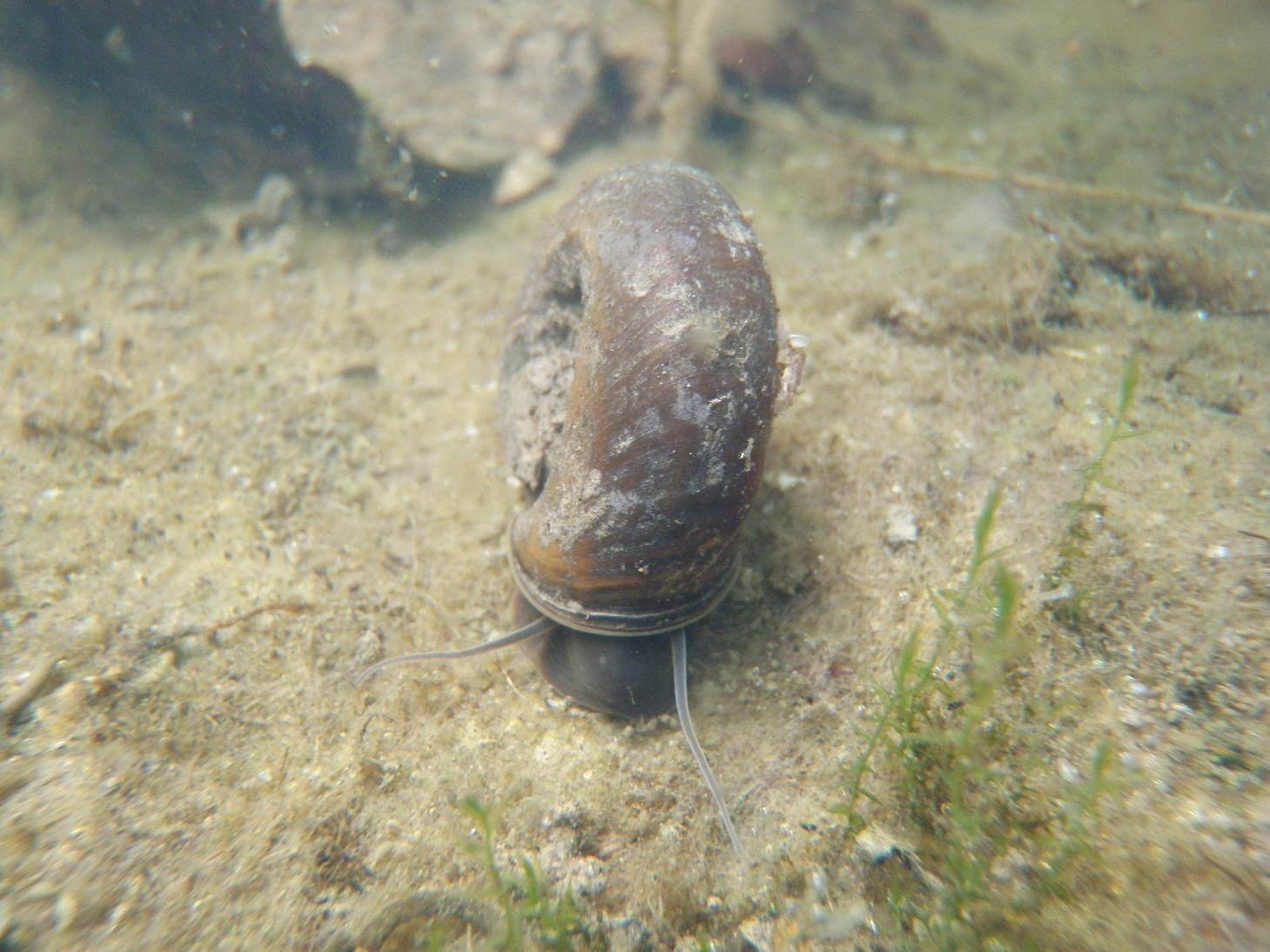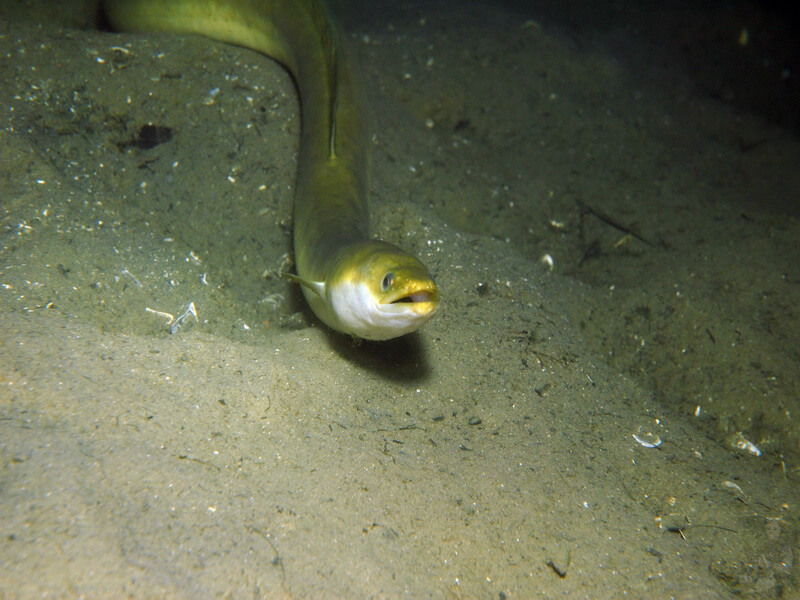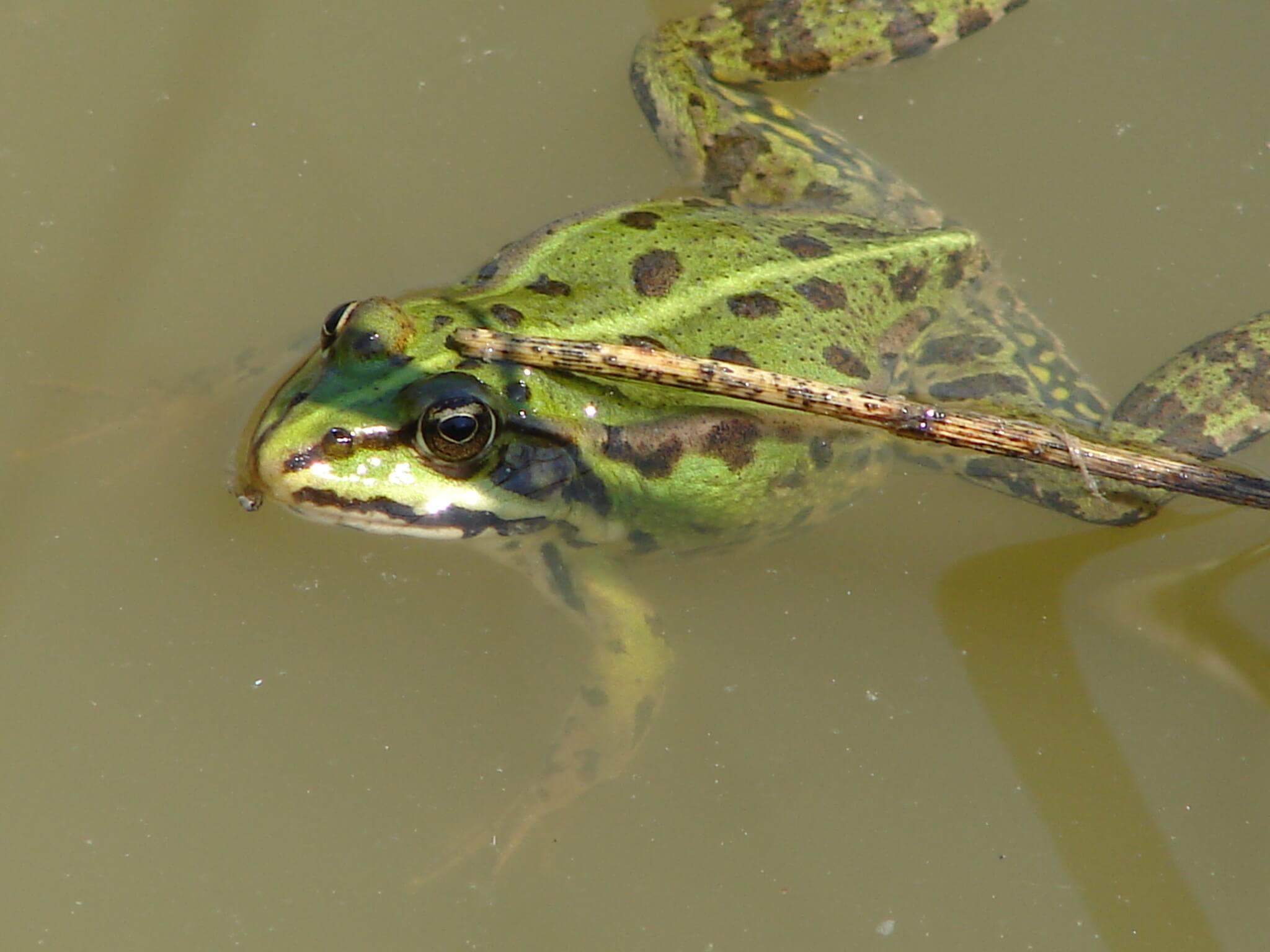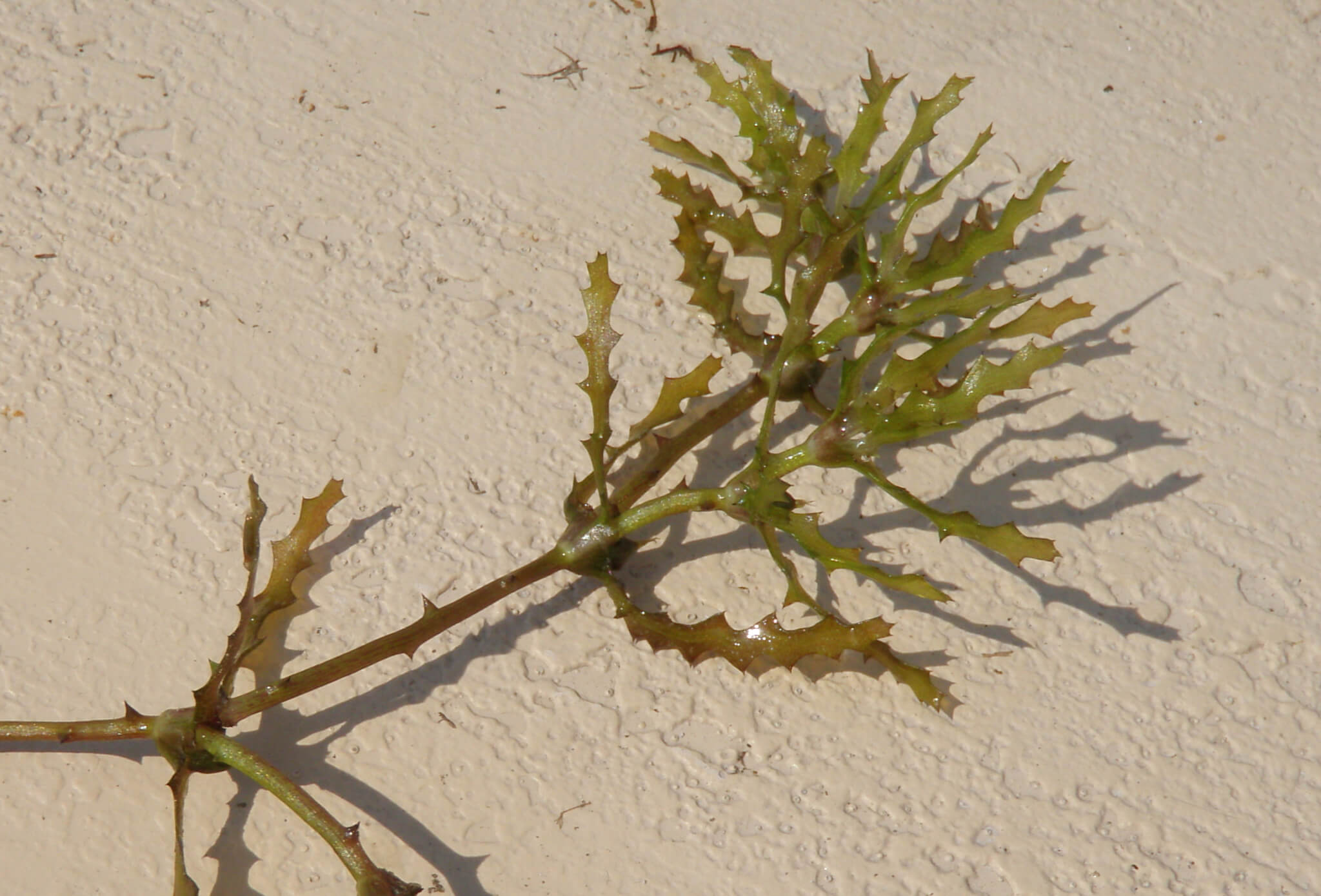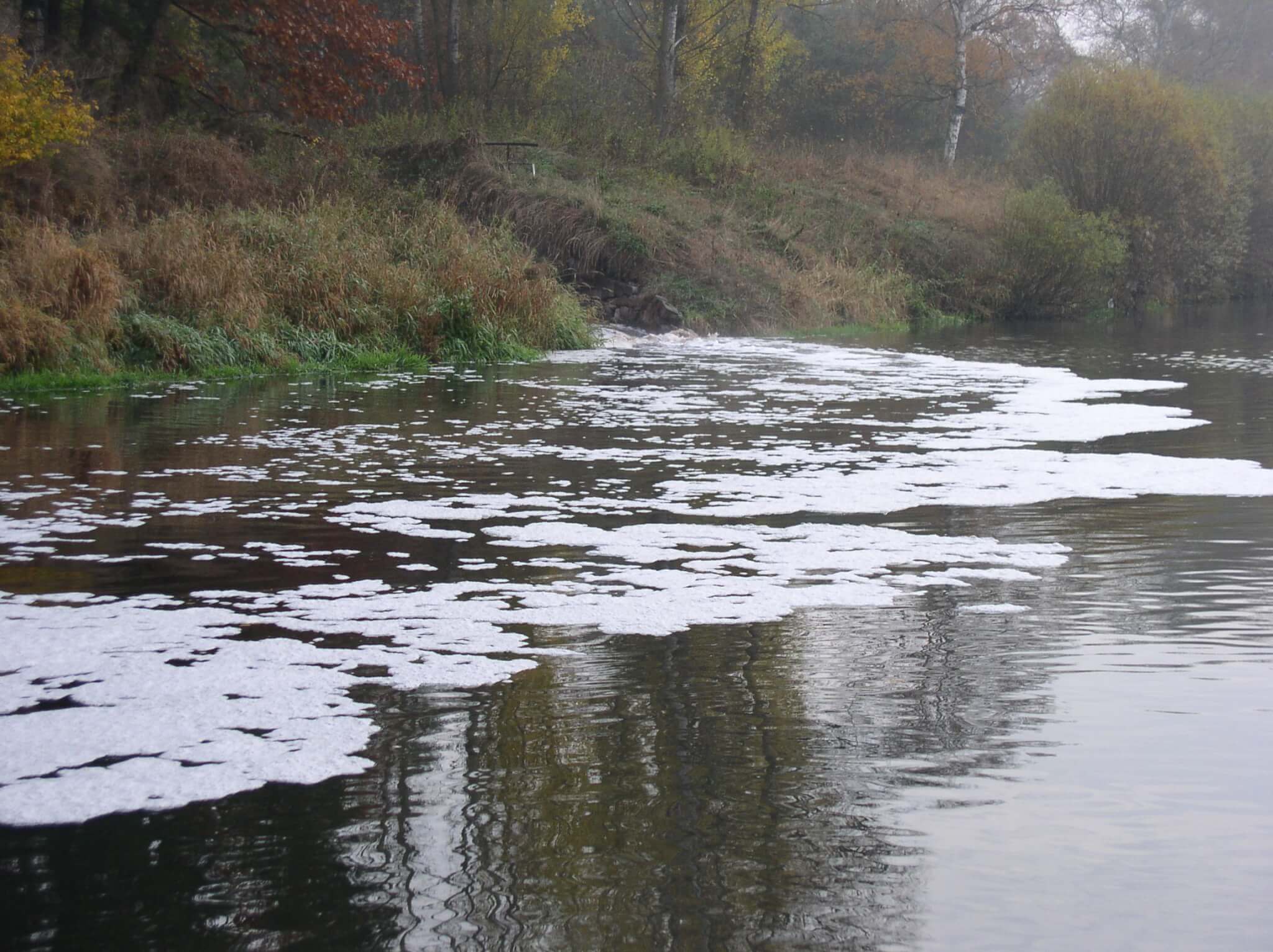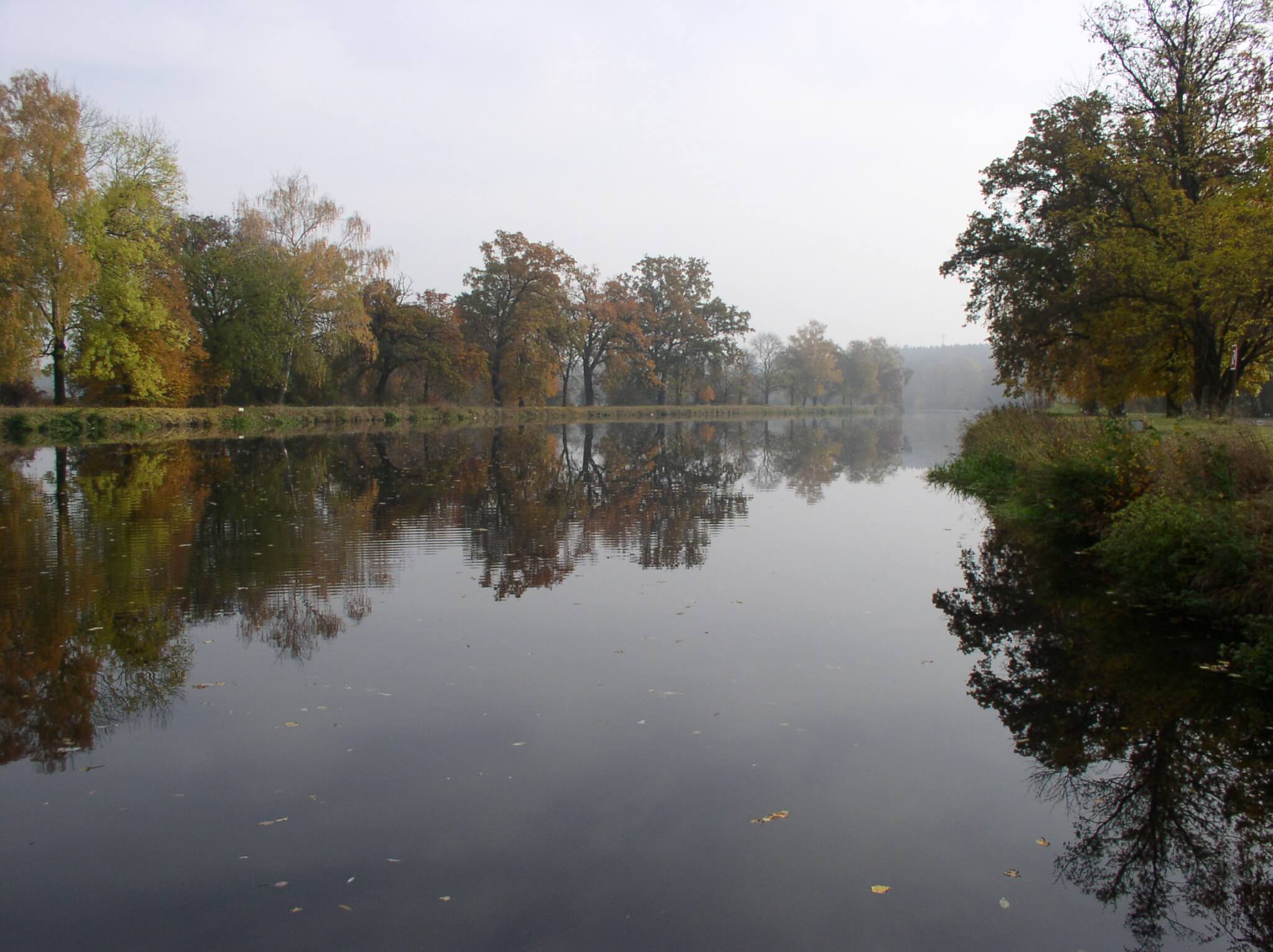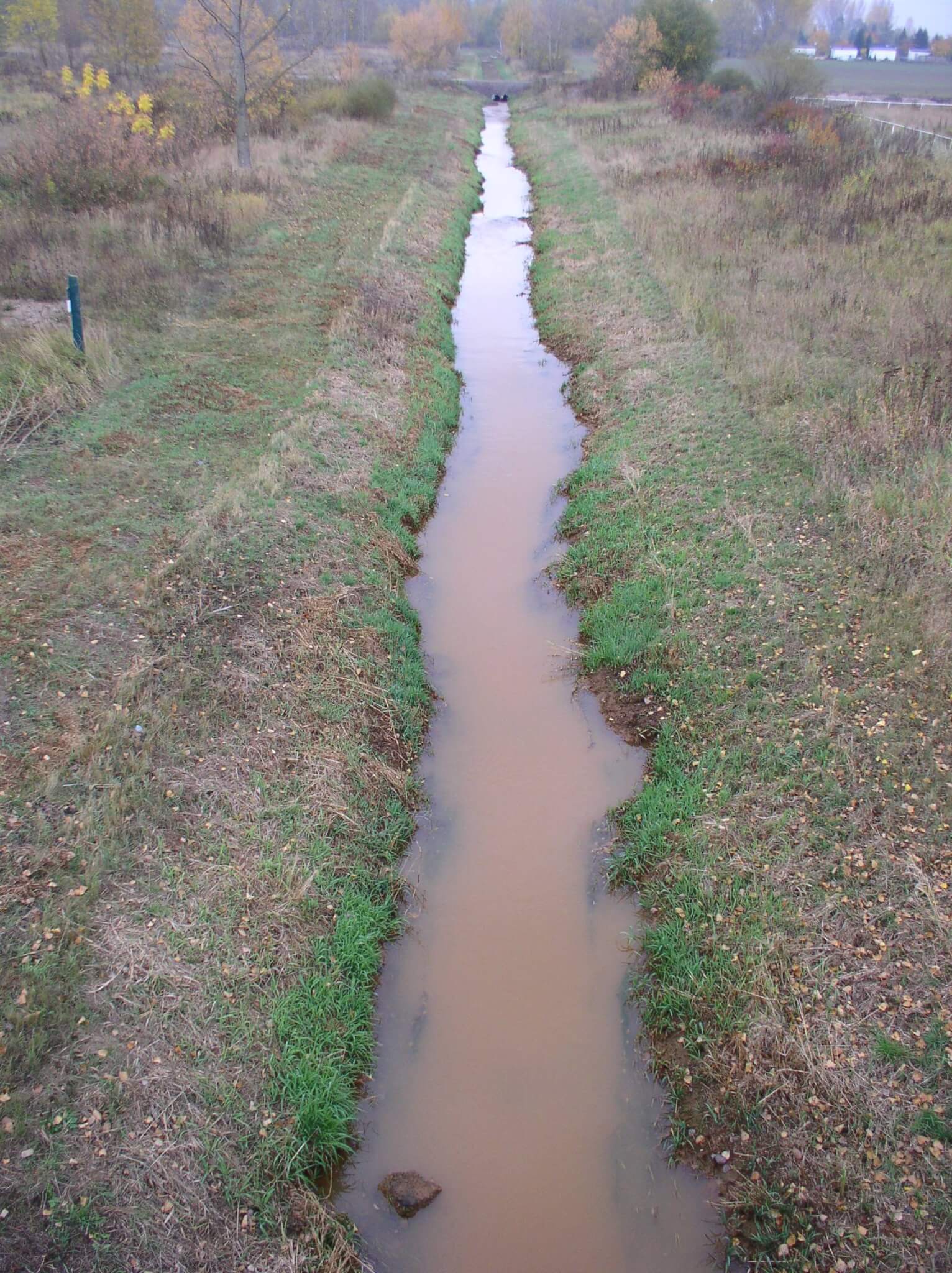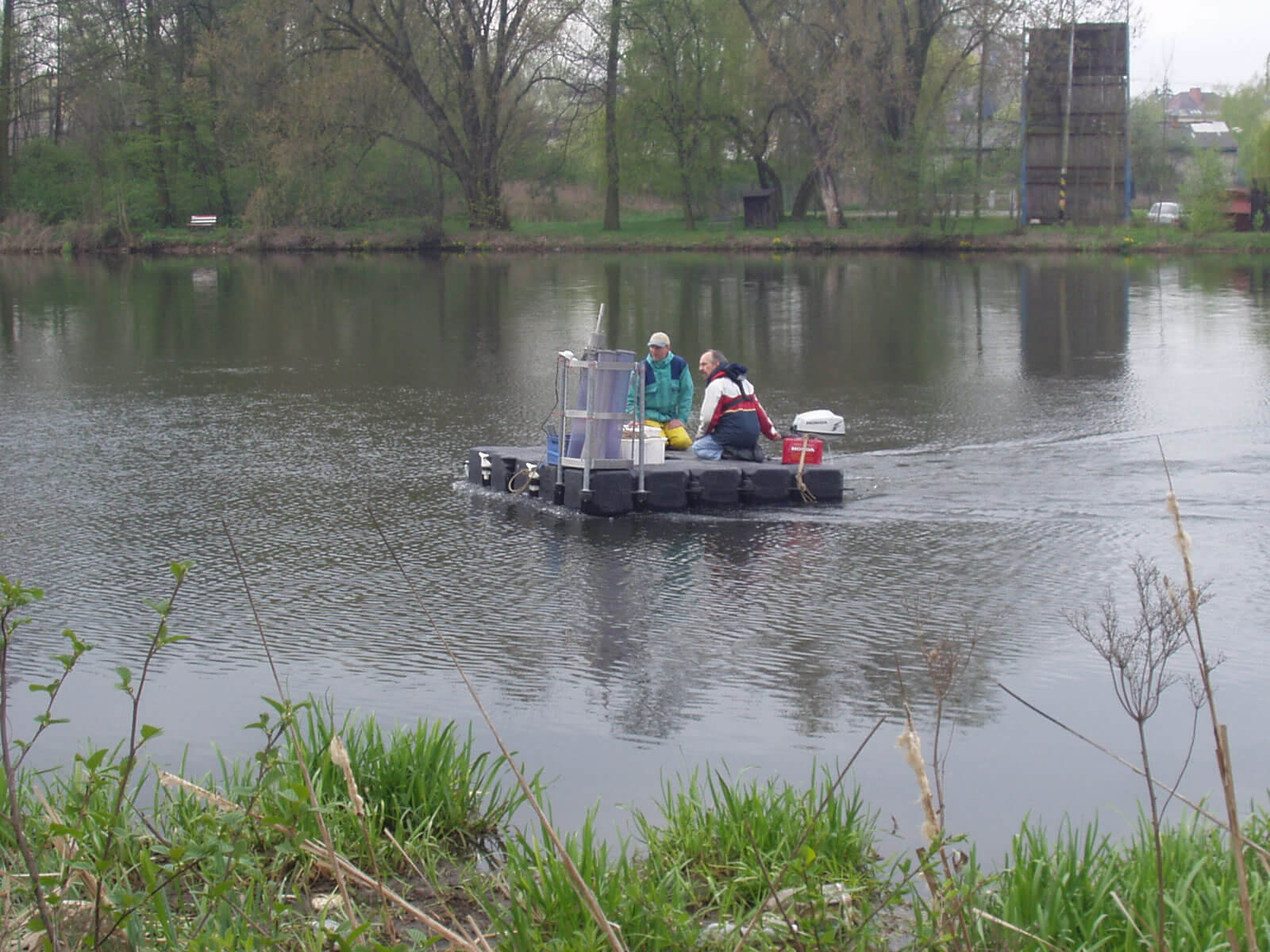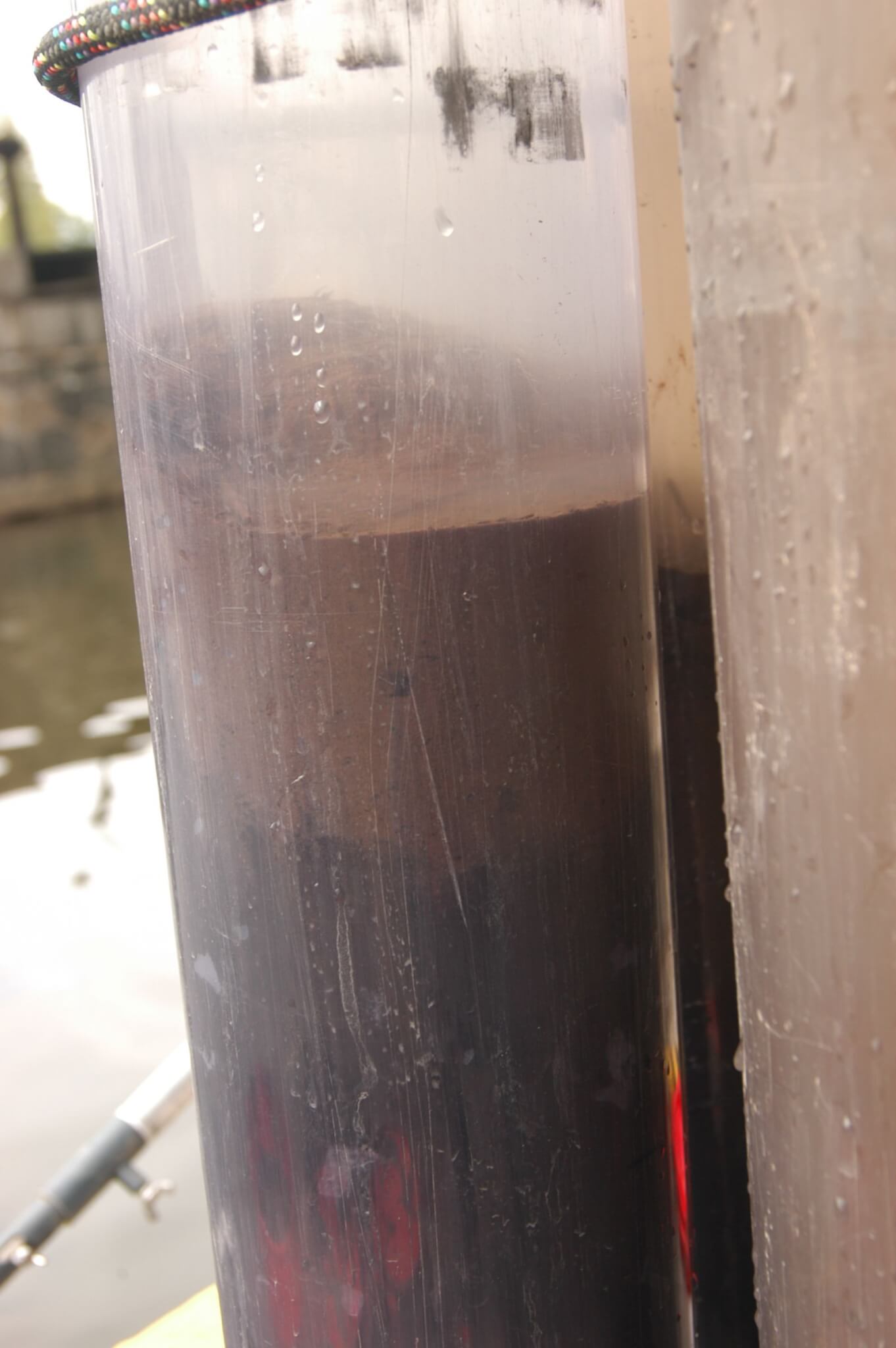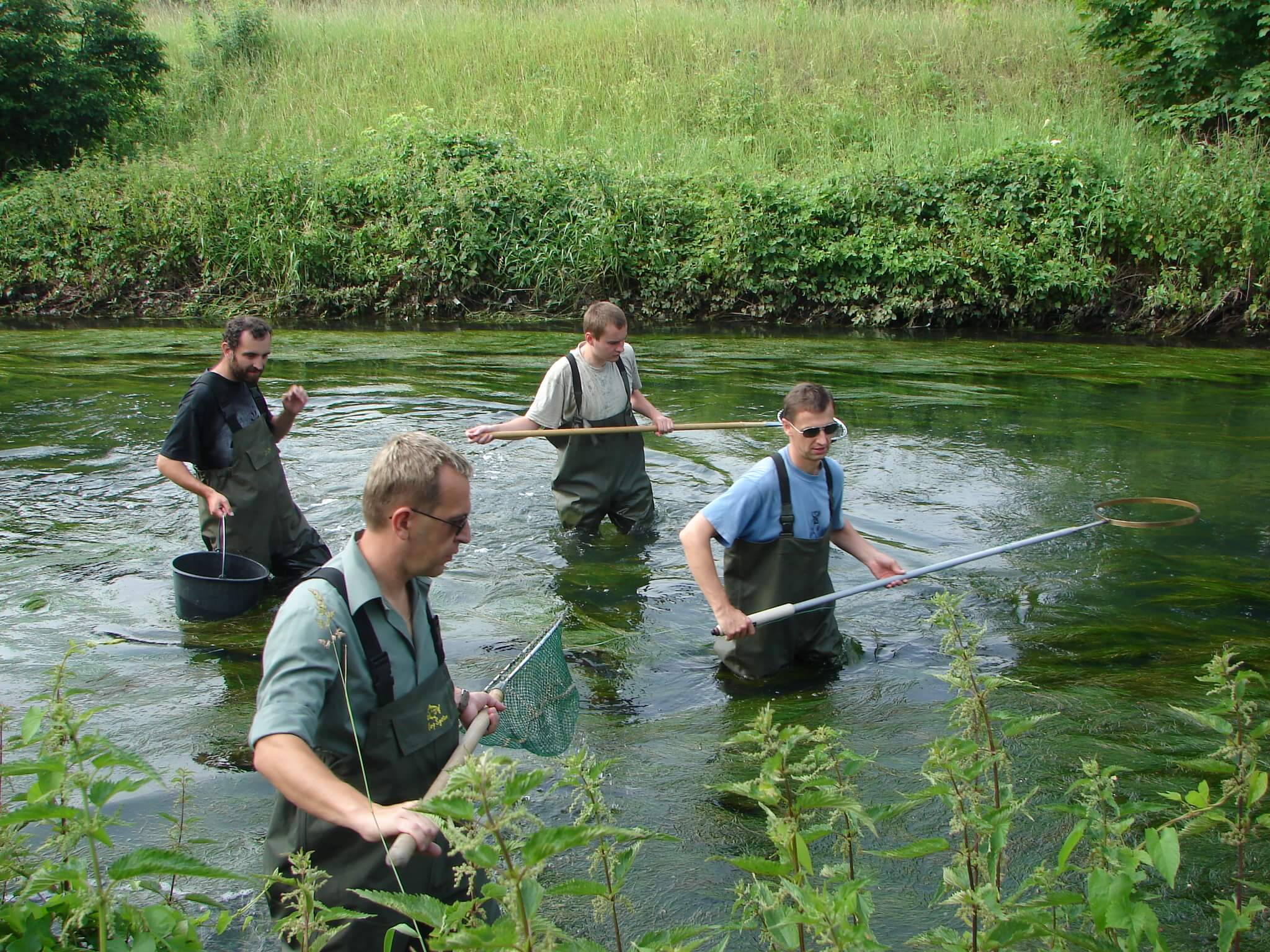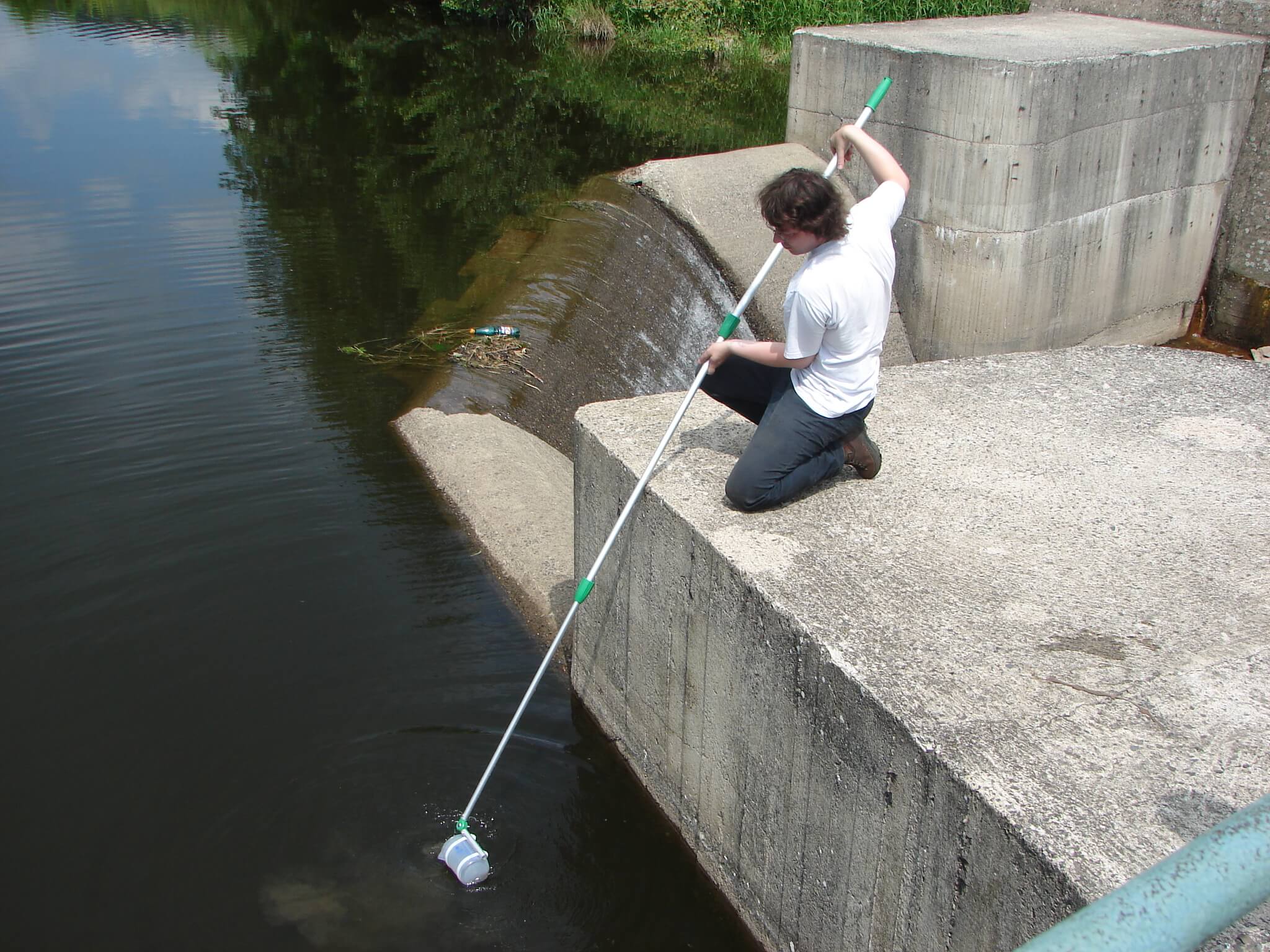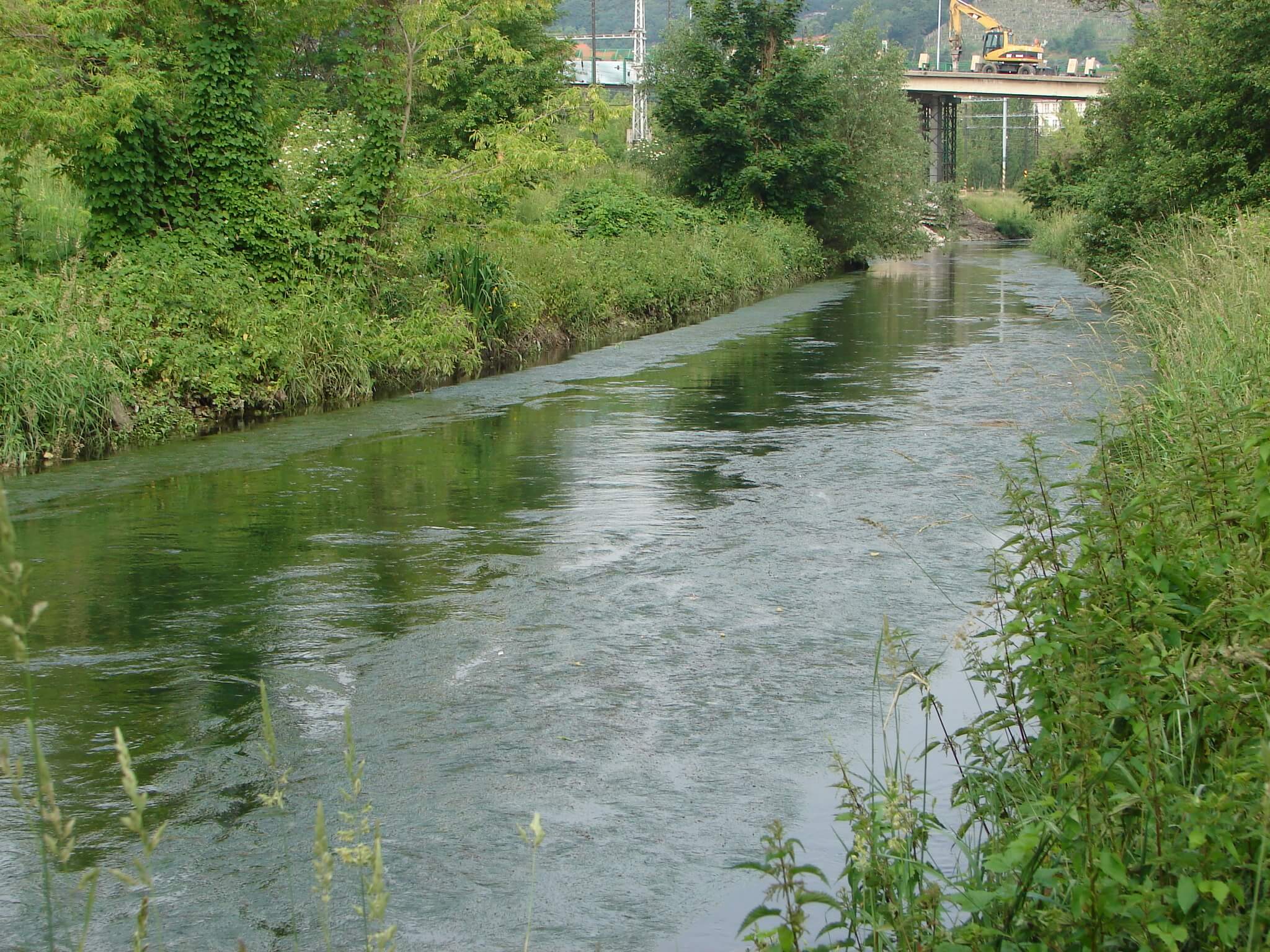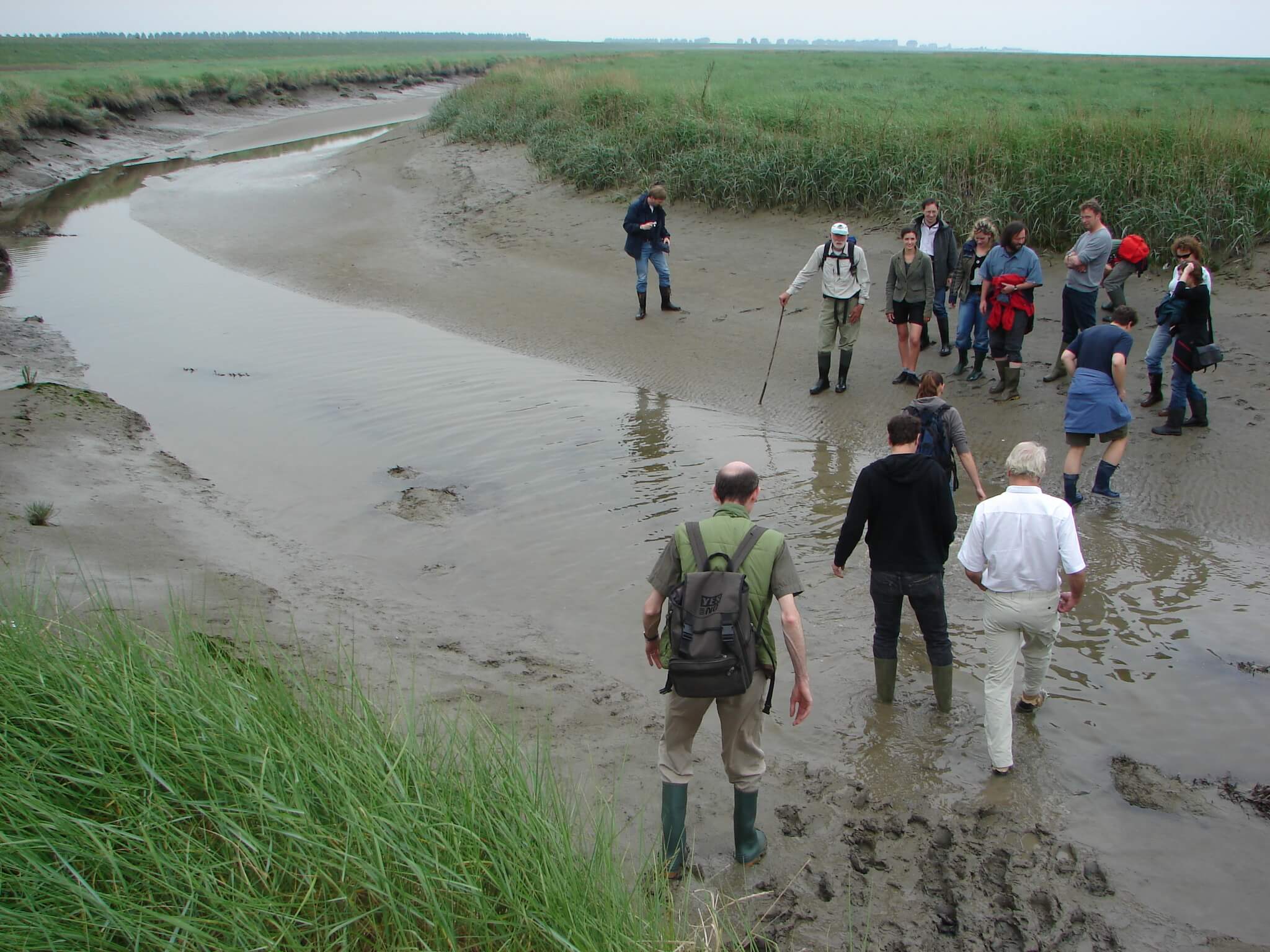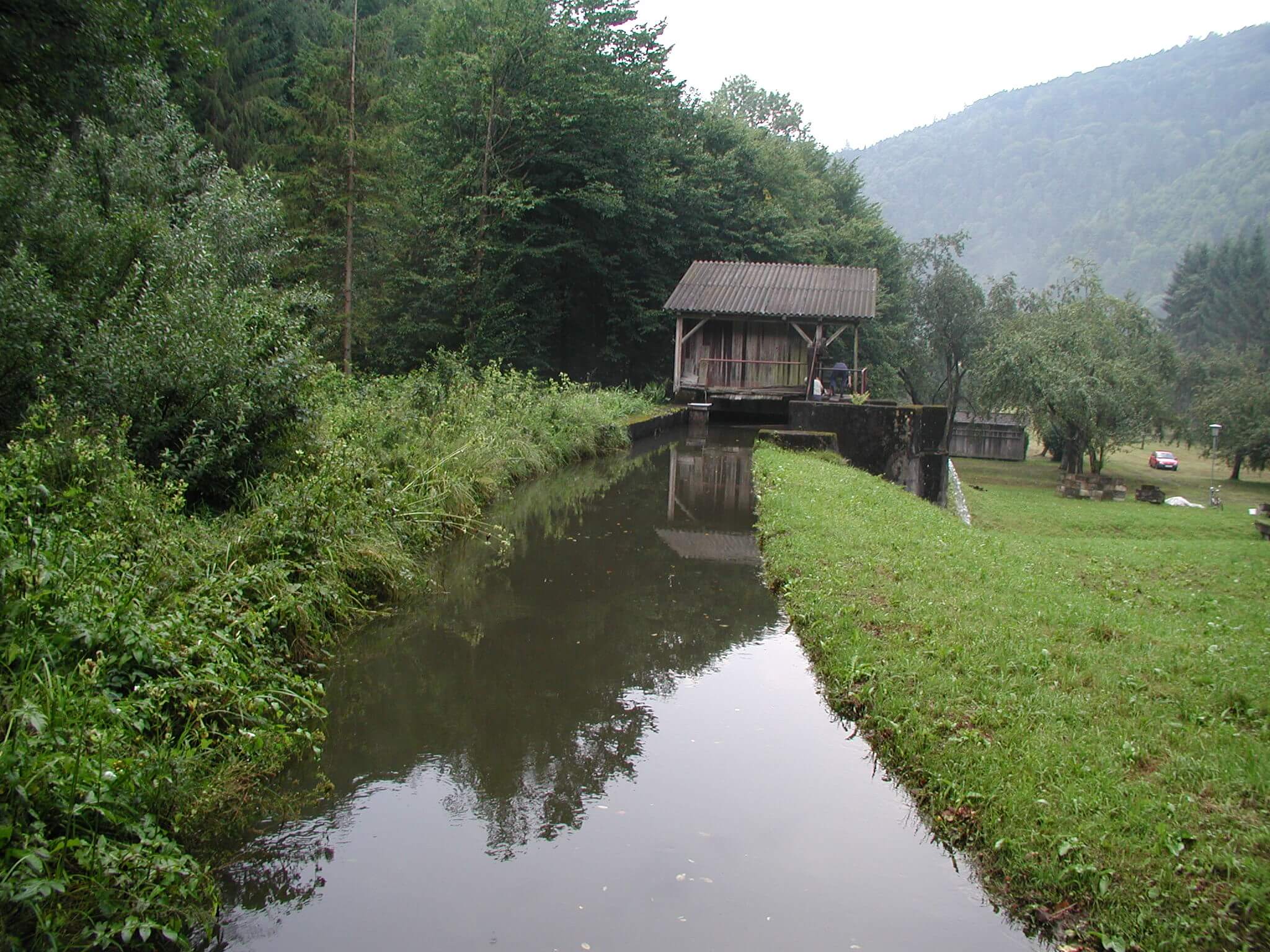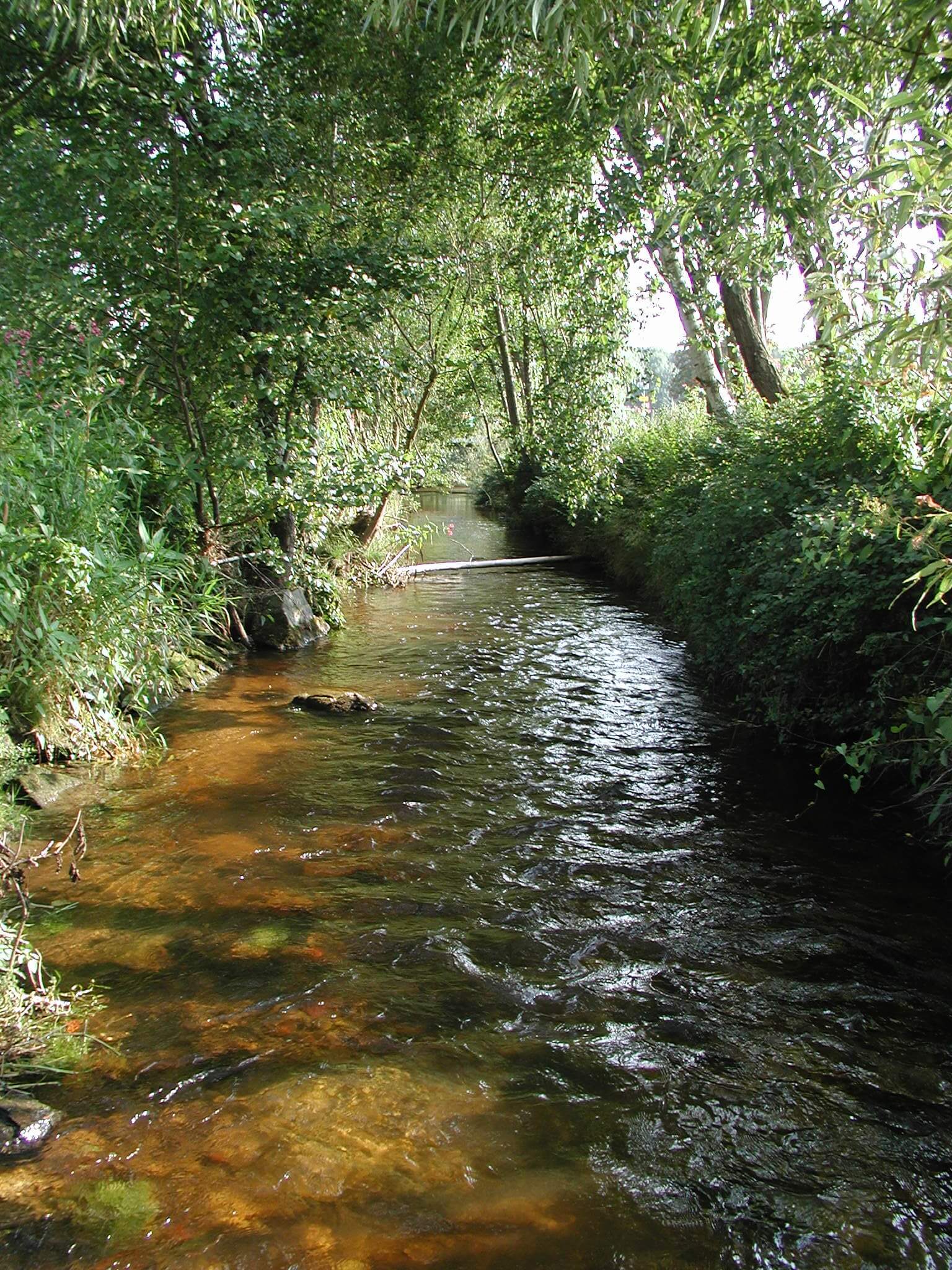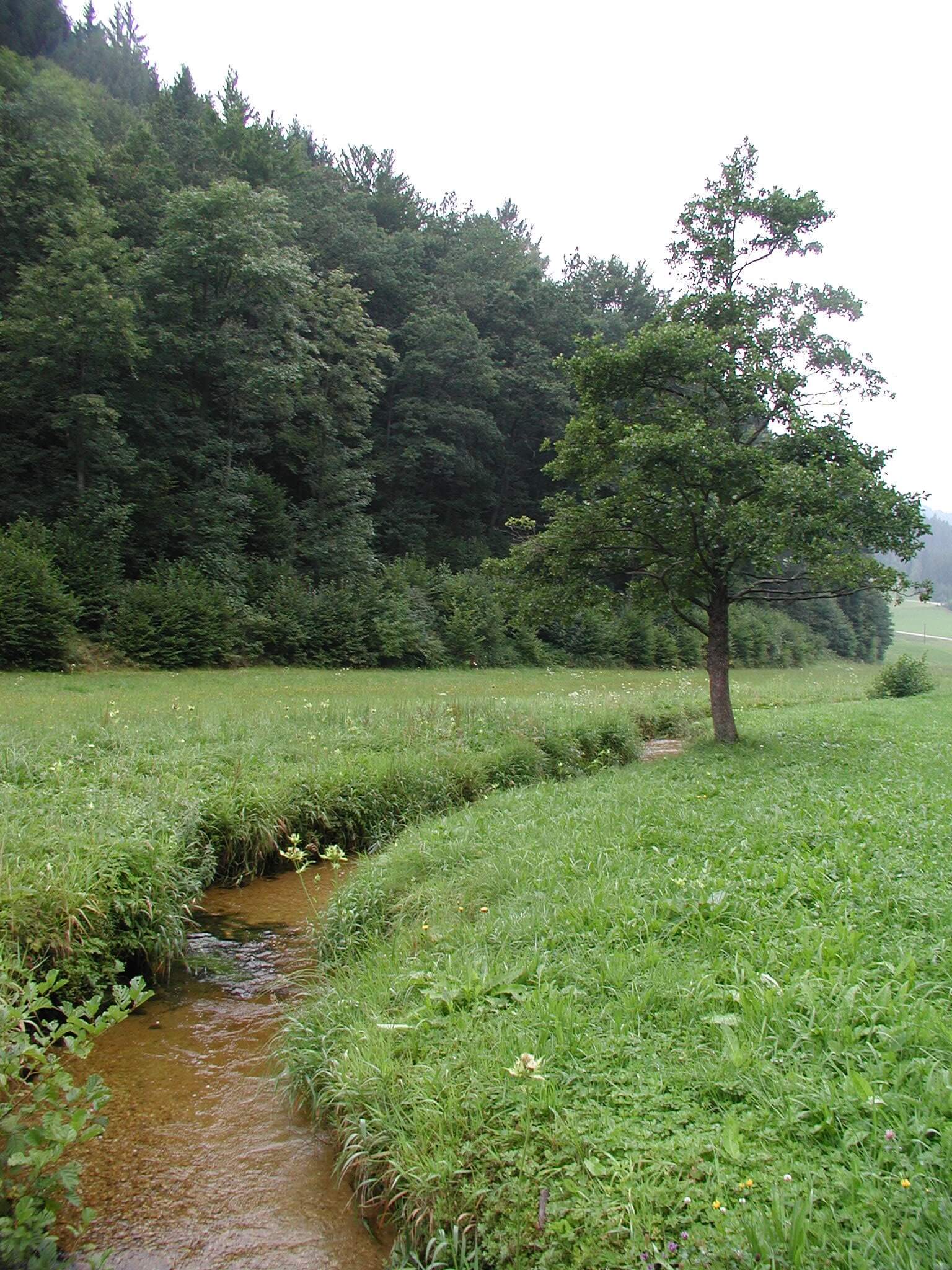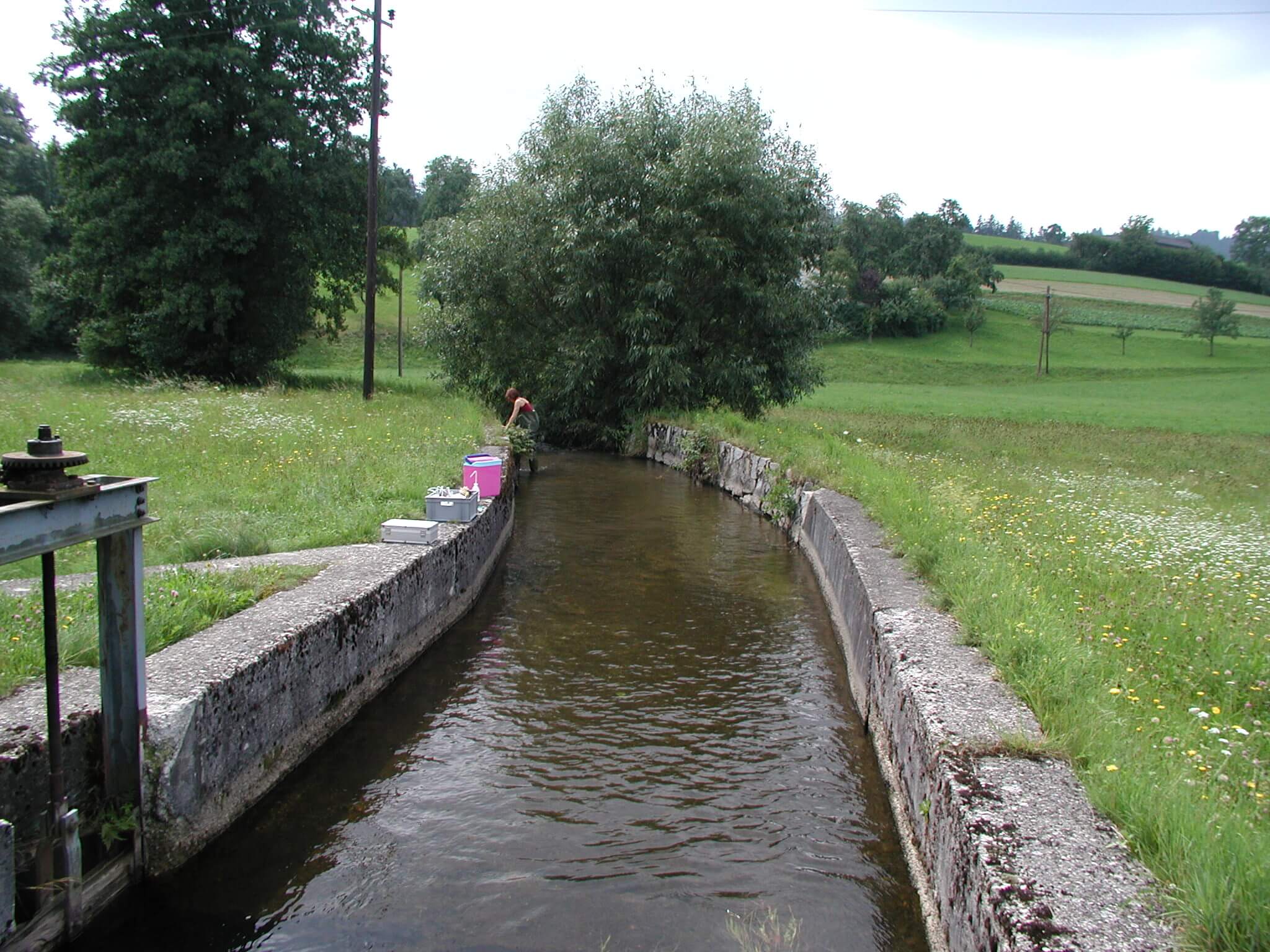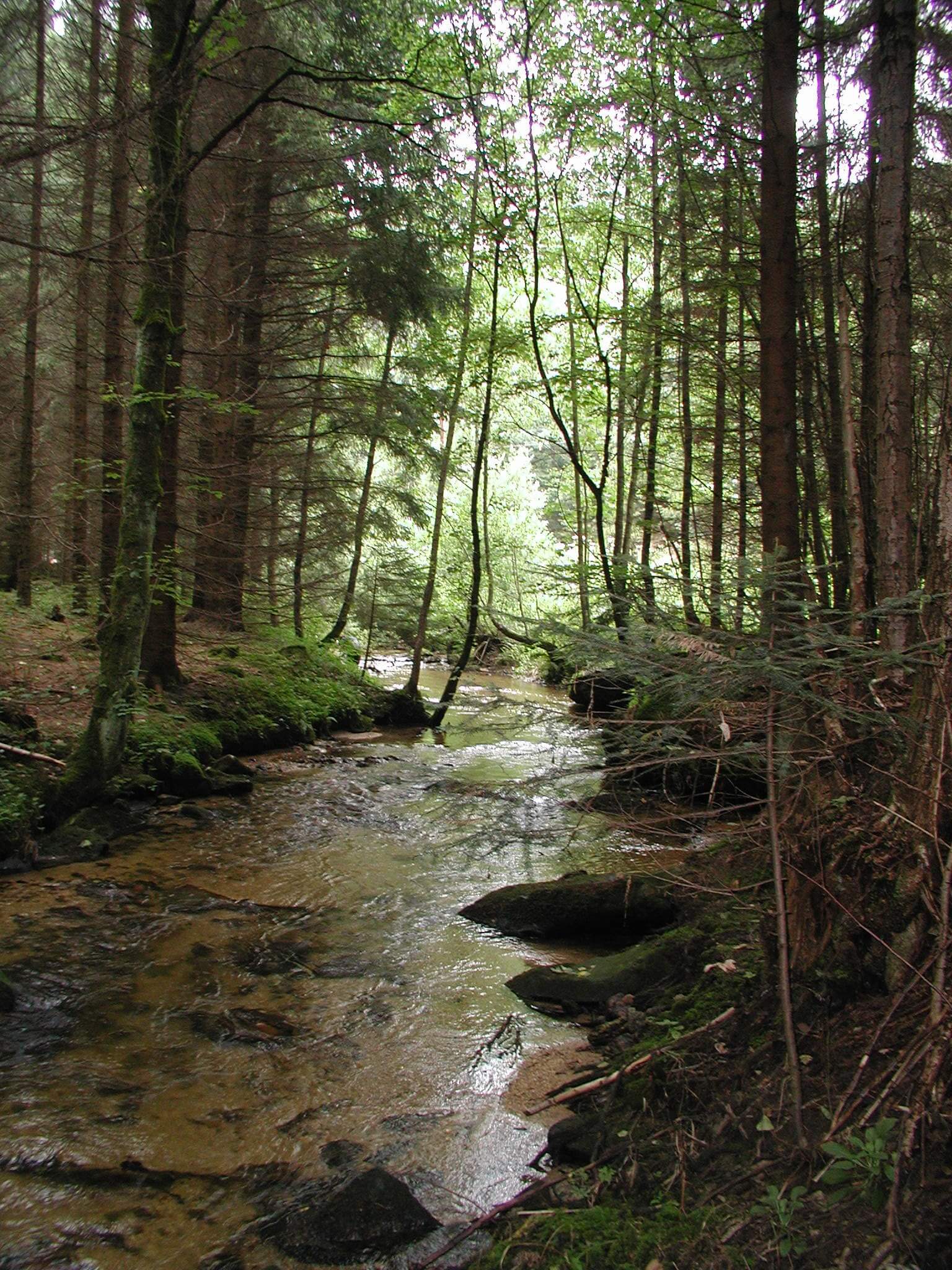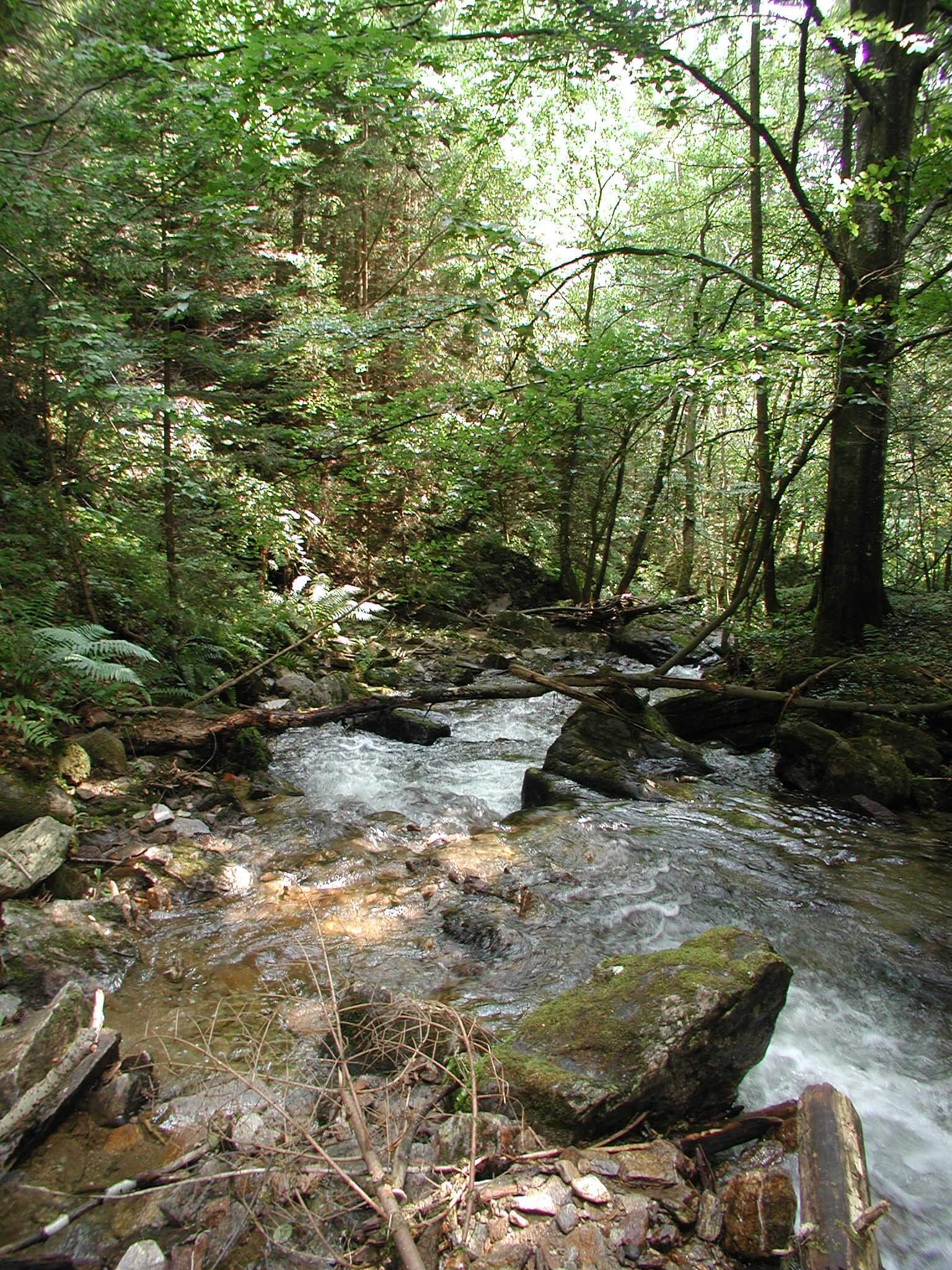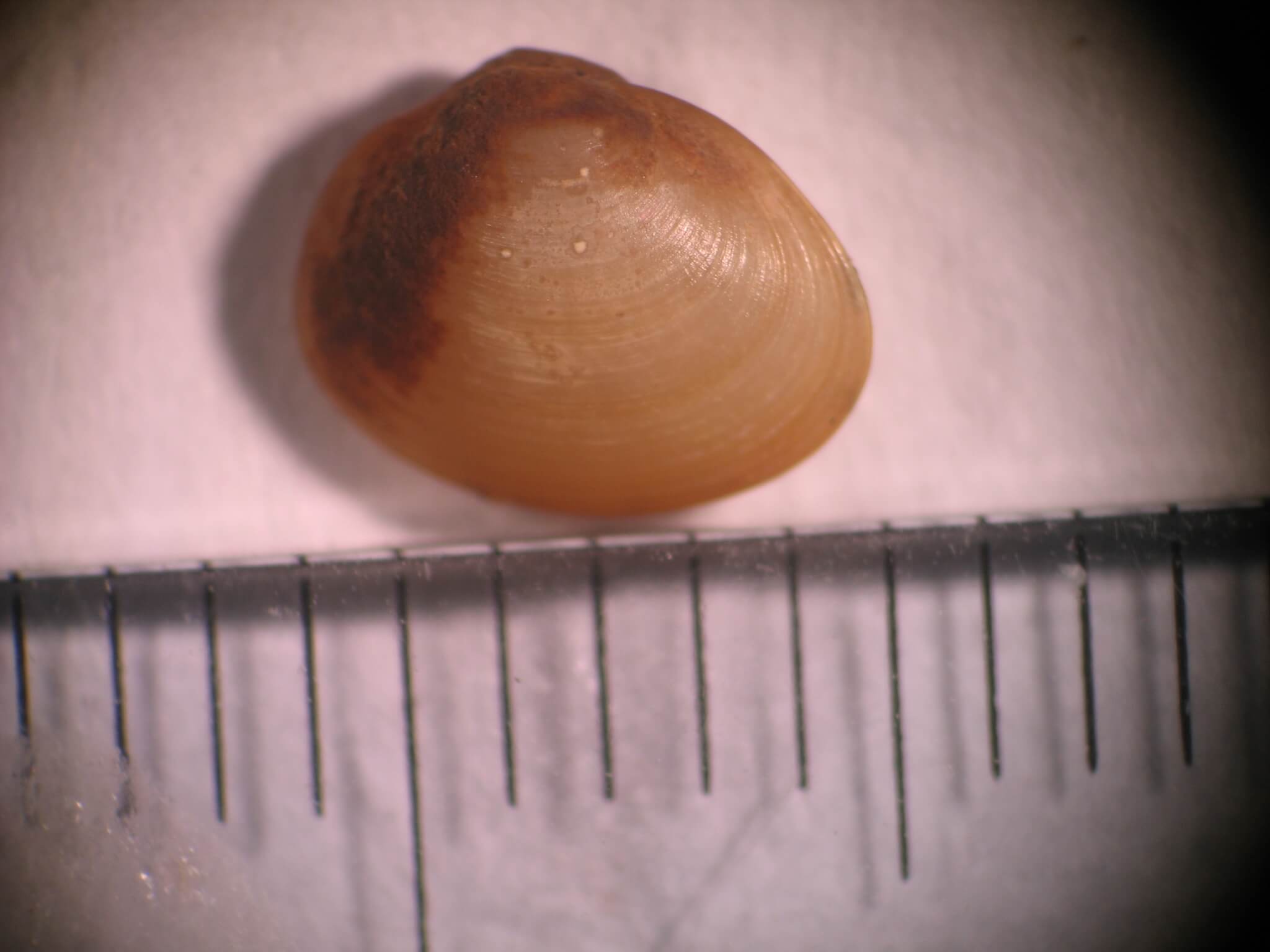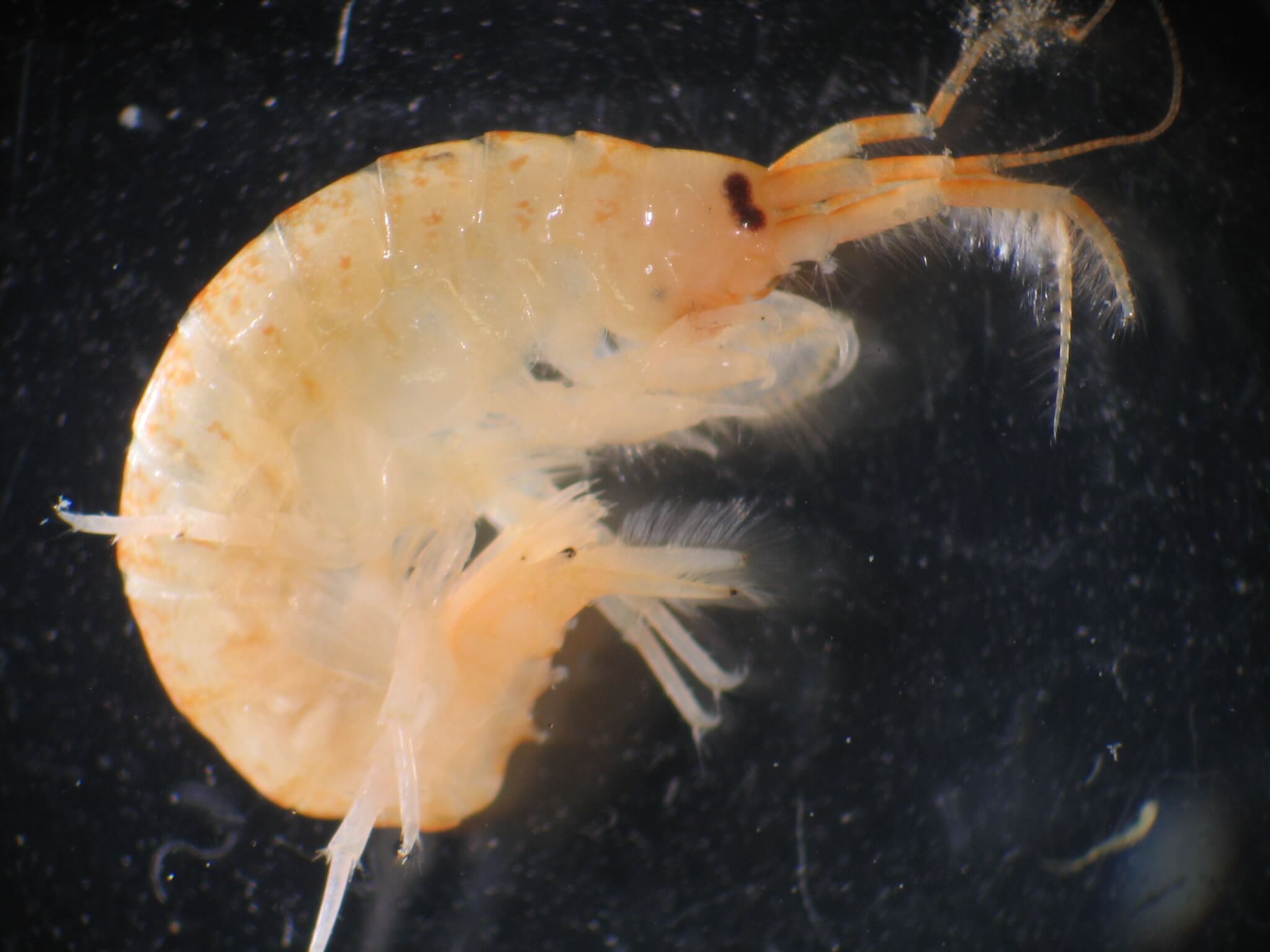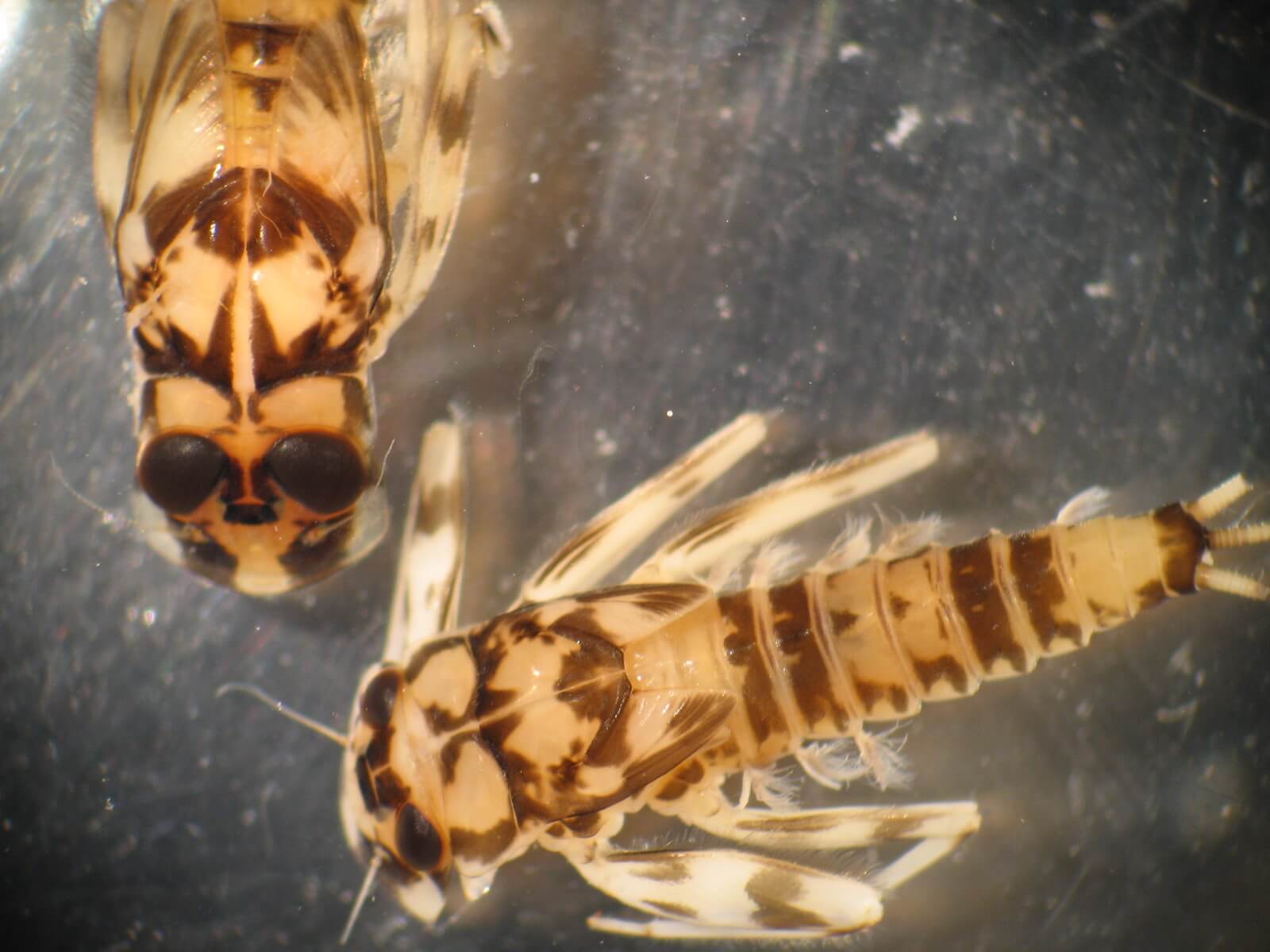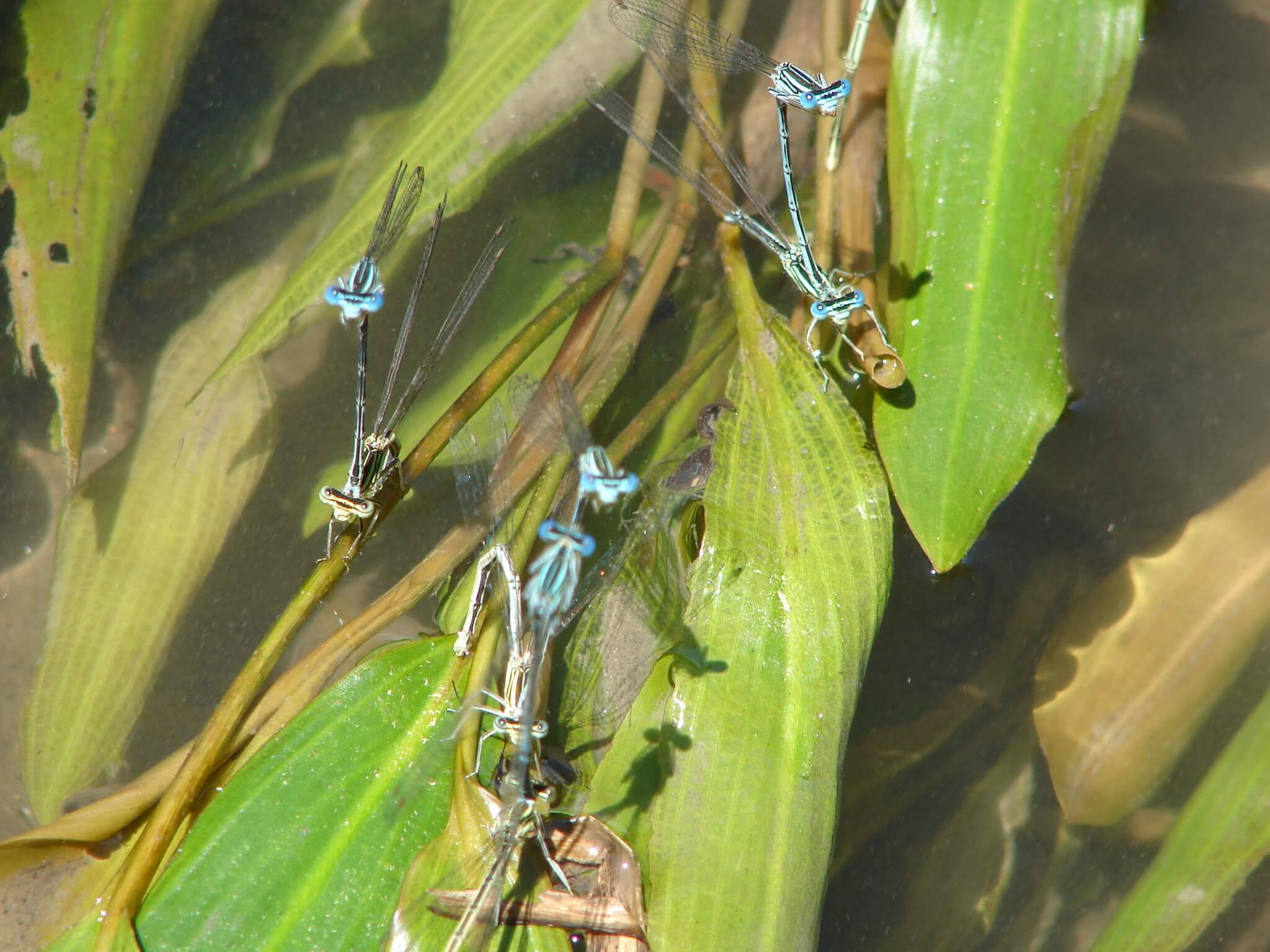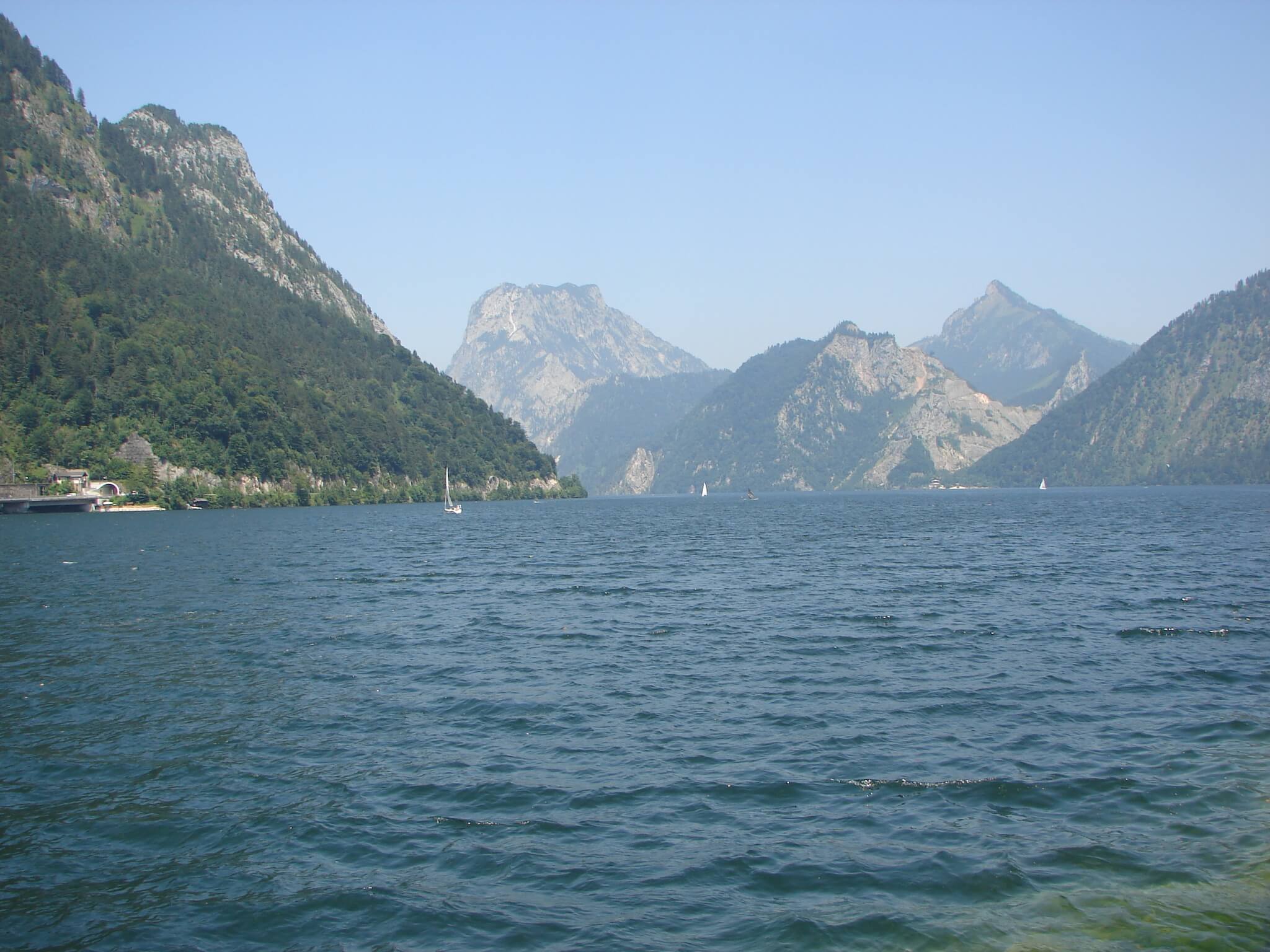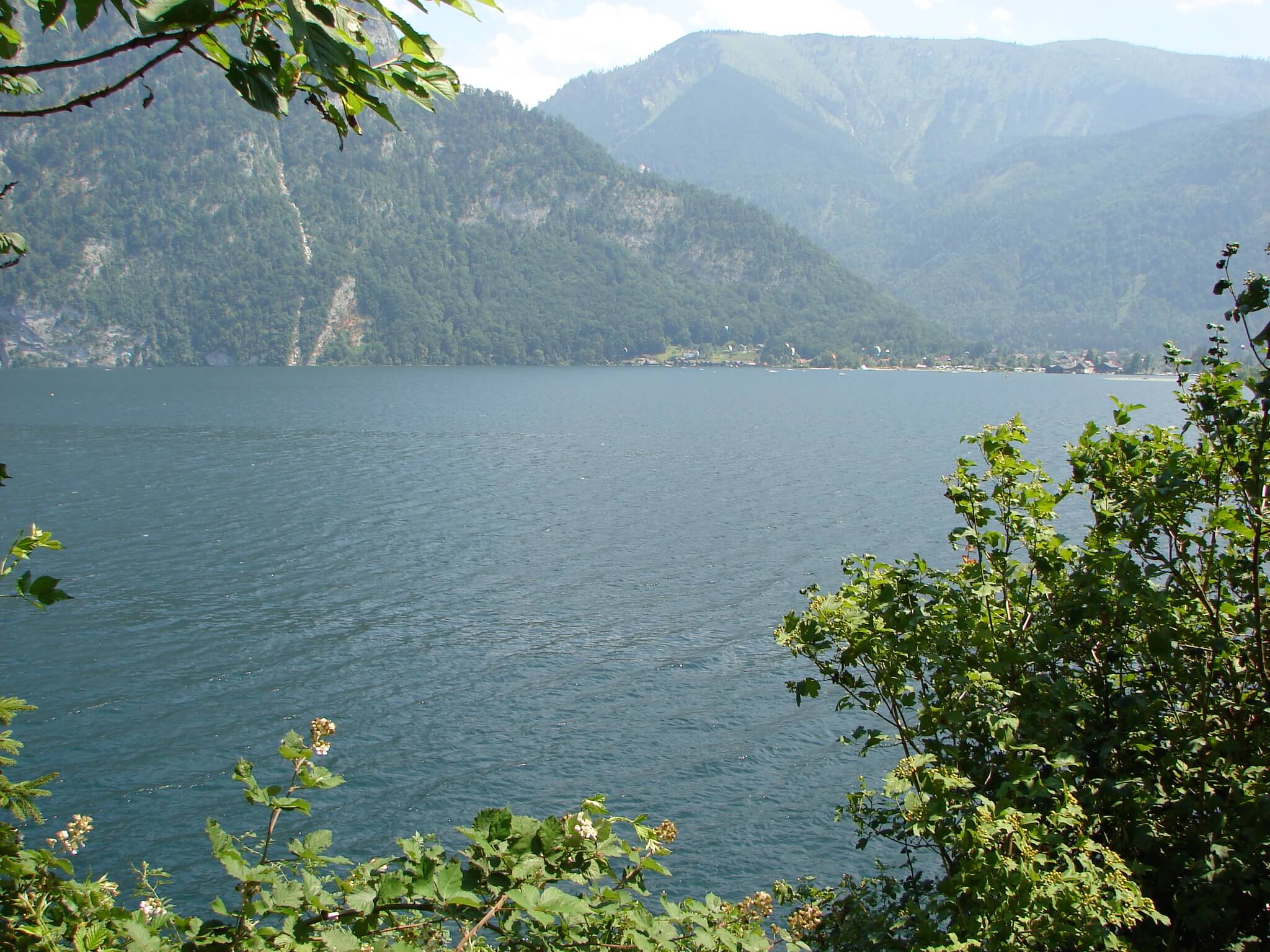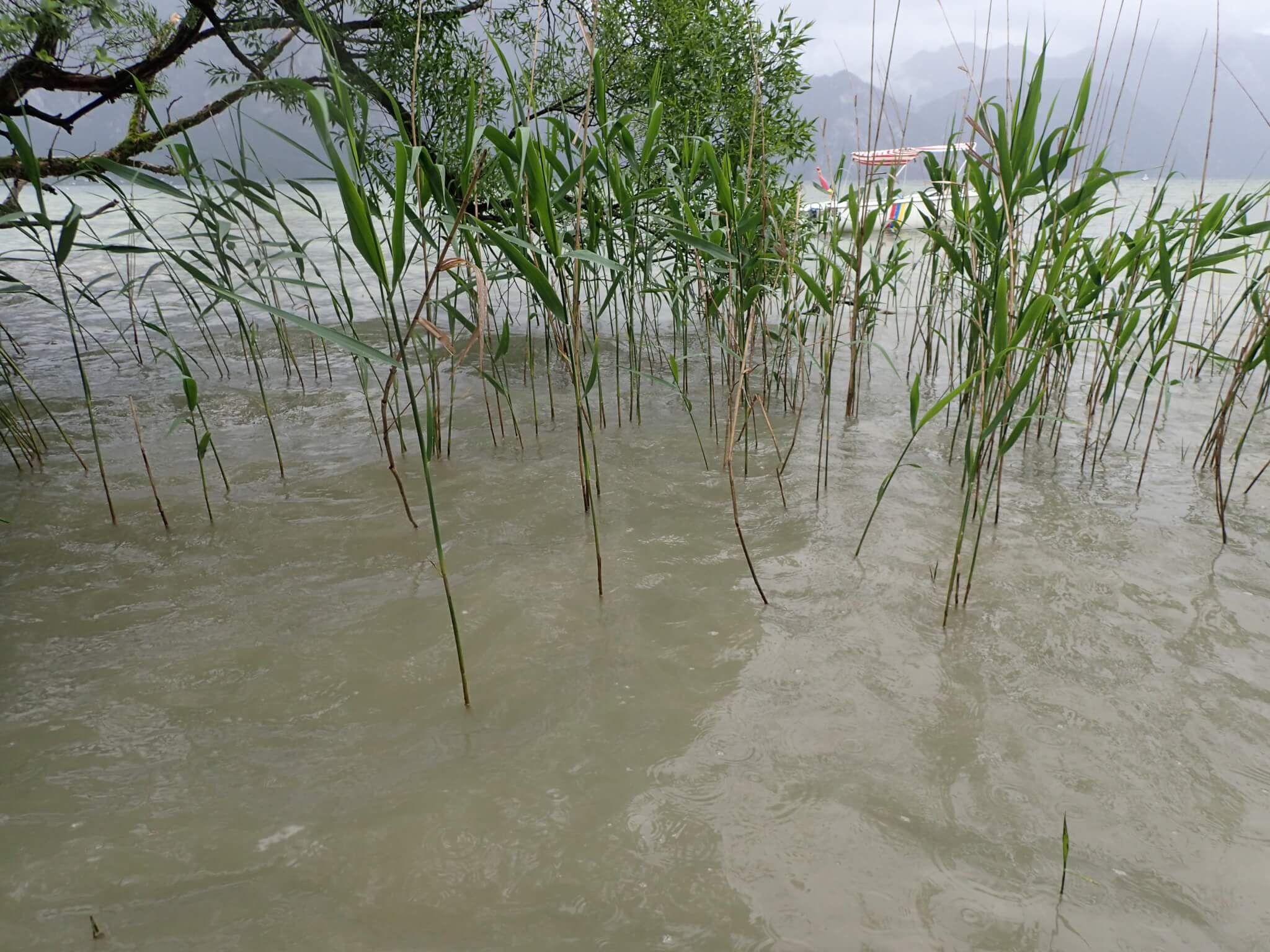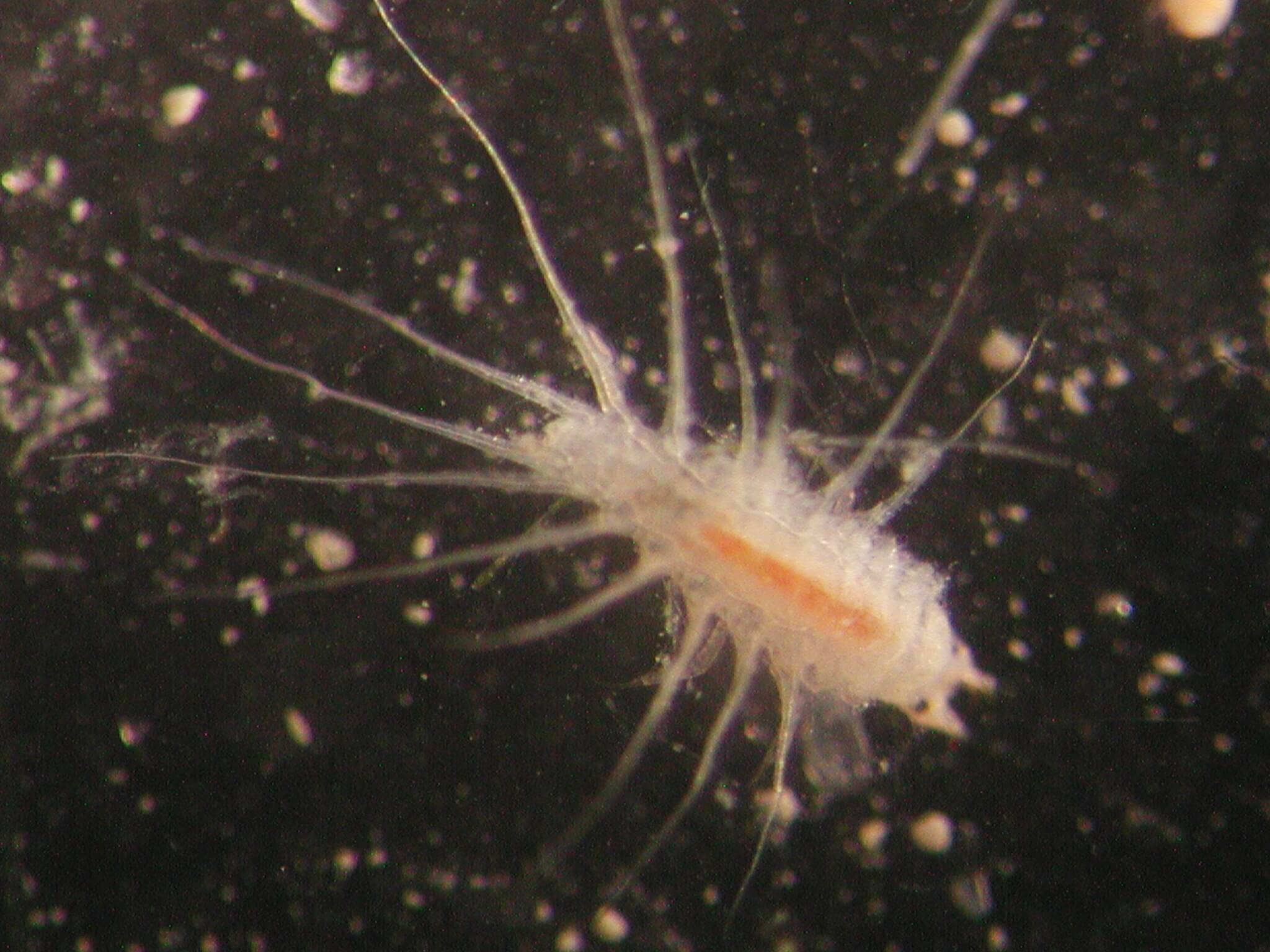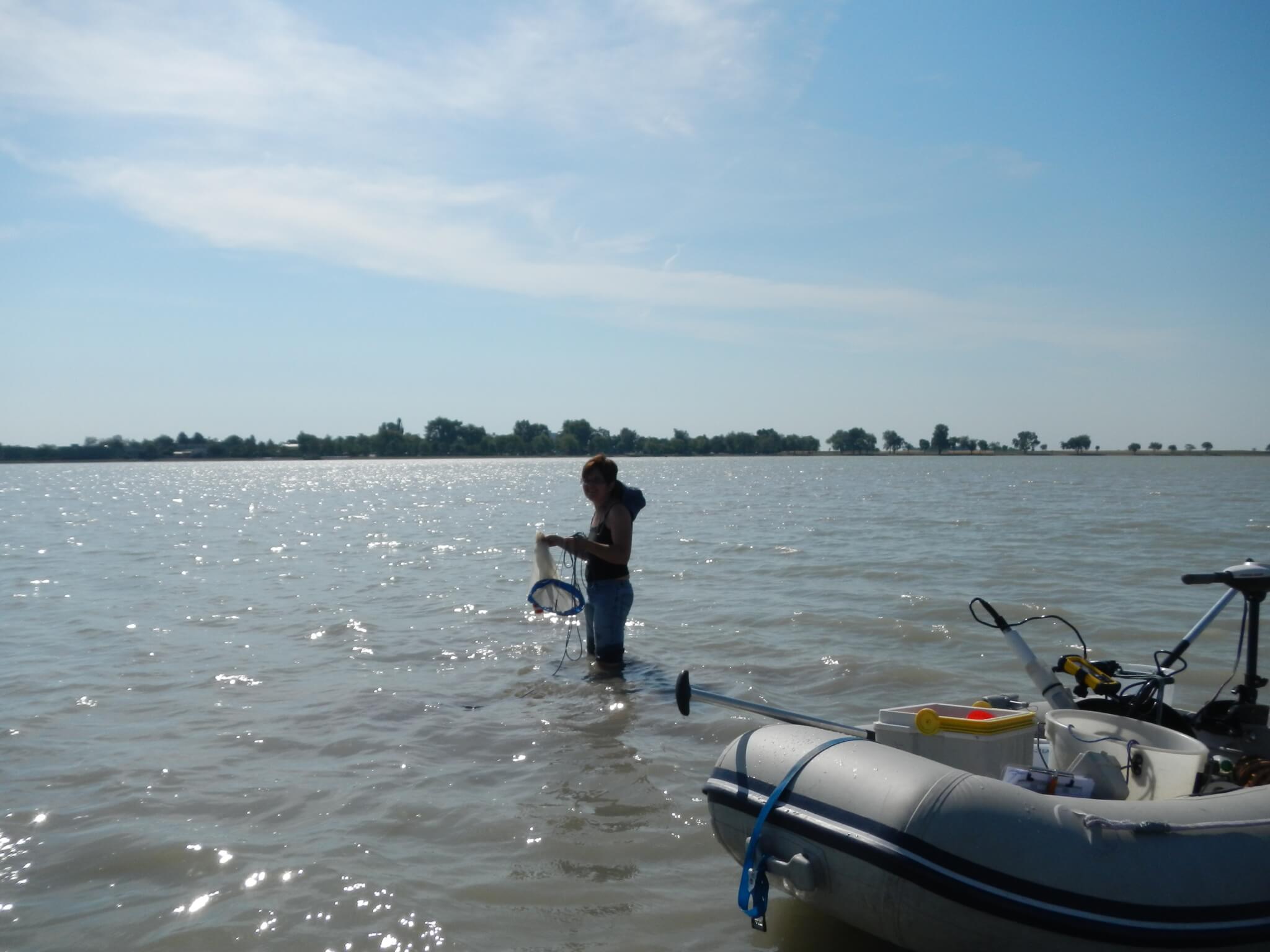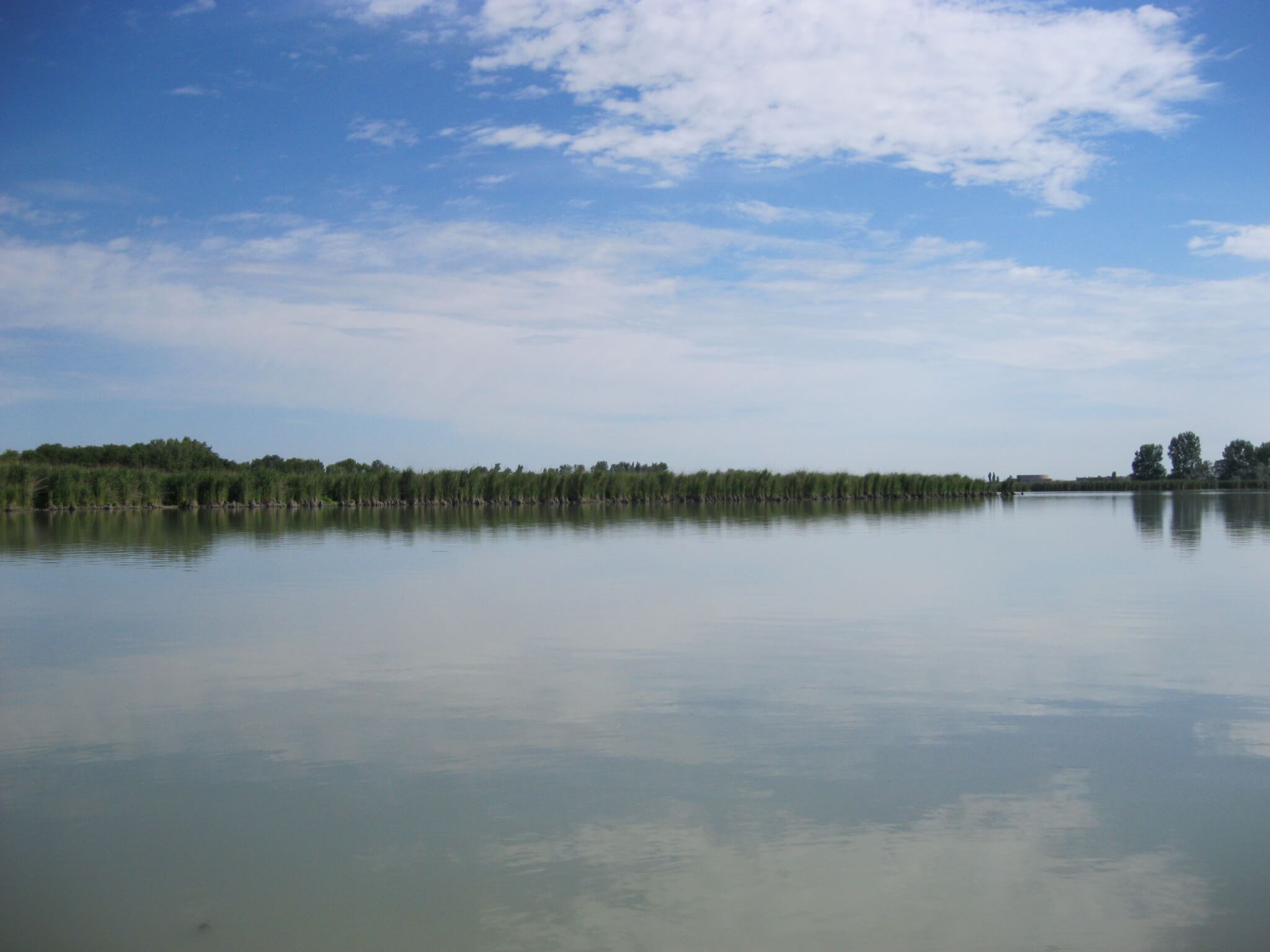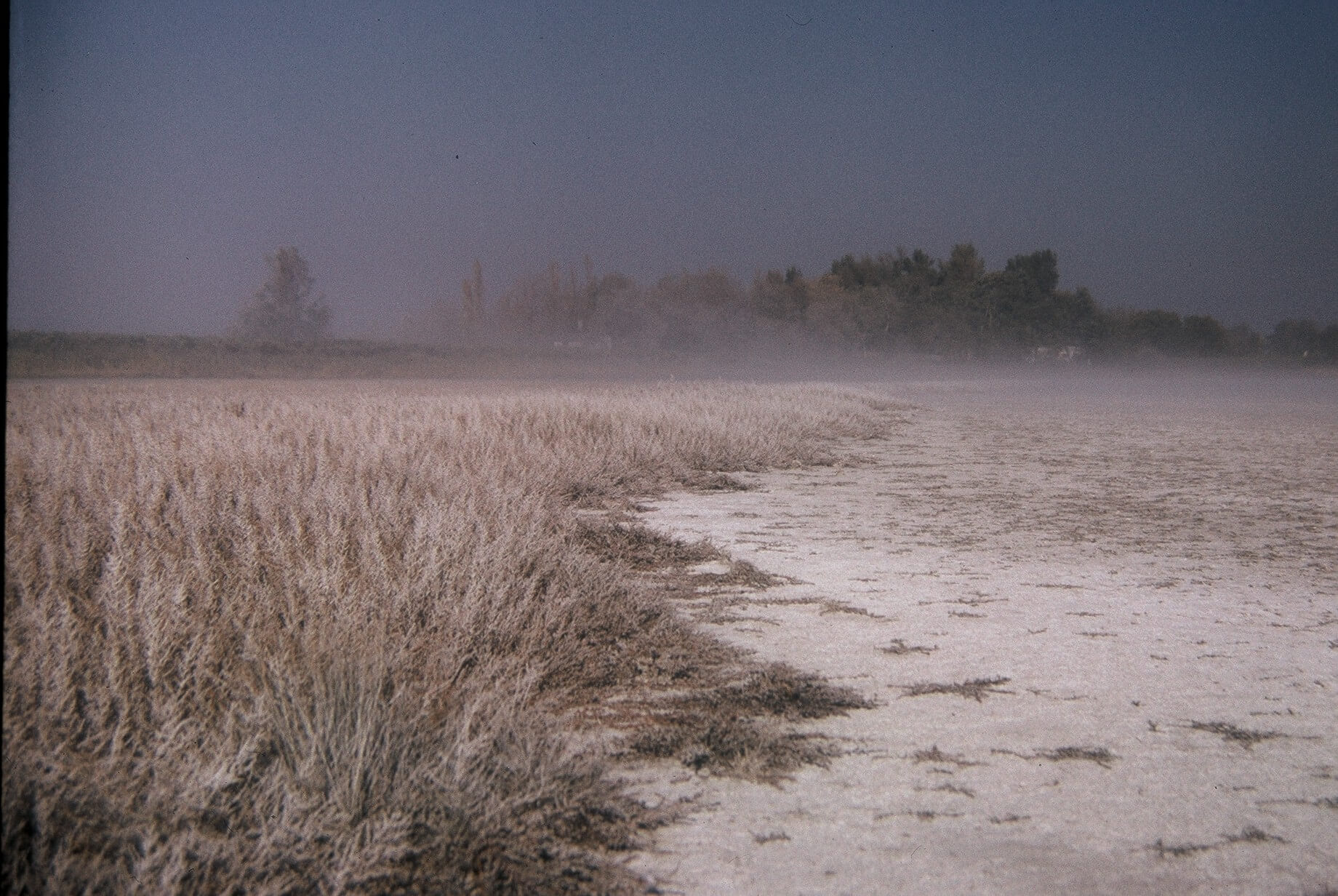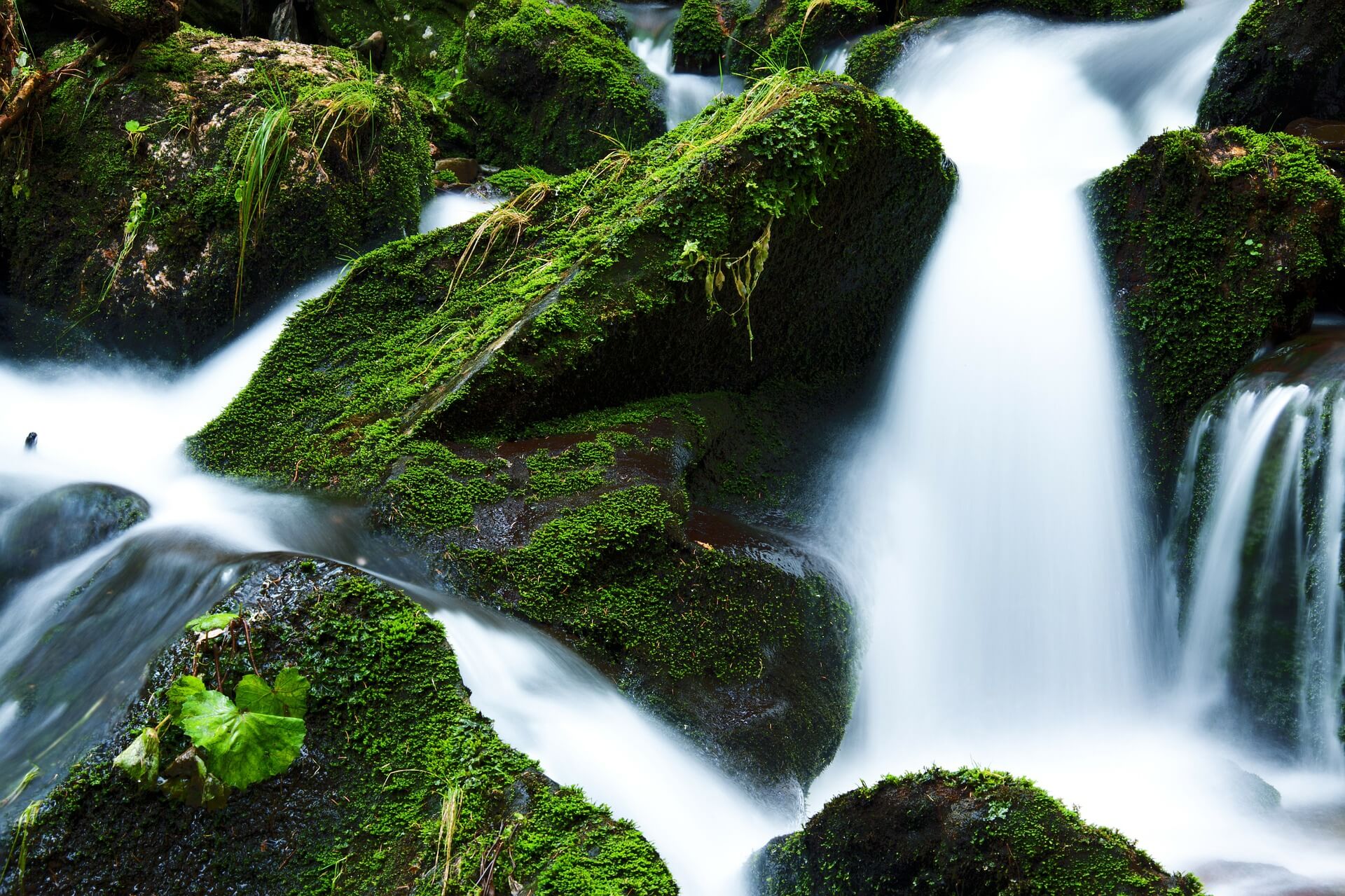
research and method development
research and method development
The DWS Hydro-Ecology sees itself as a bridge between university research in the broad field of limnology and practical application in the field of water management. For more than 20 years we have regularly participated in international research projects. Our cooperation partners include the Helmholtz Centre for Environmental Research, the Institute for Limnology of the Academy of Sciences and the Technical University of Budapest.
Research projects
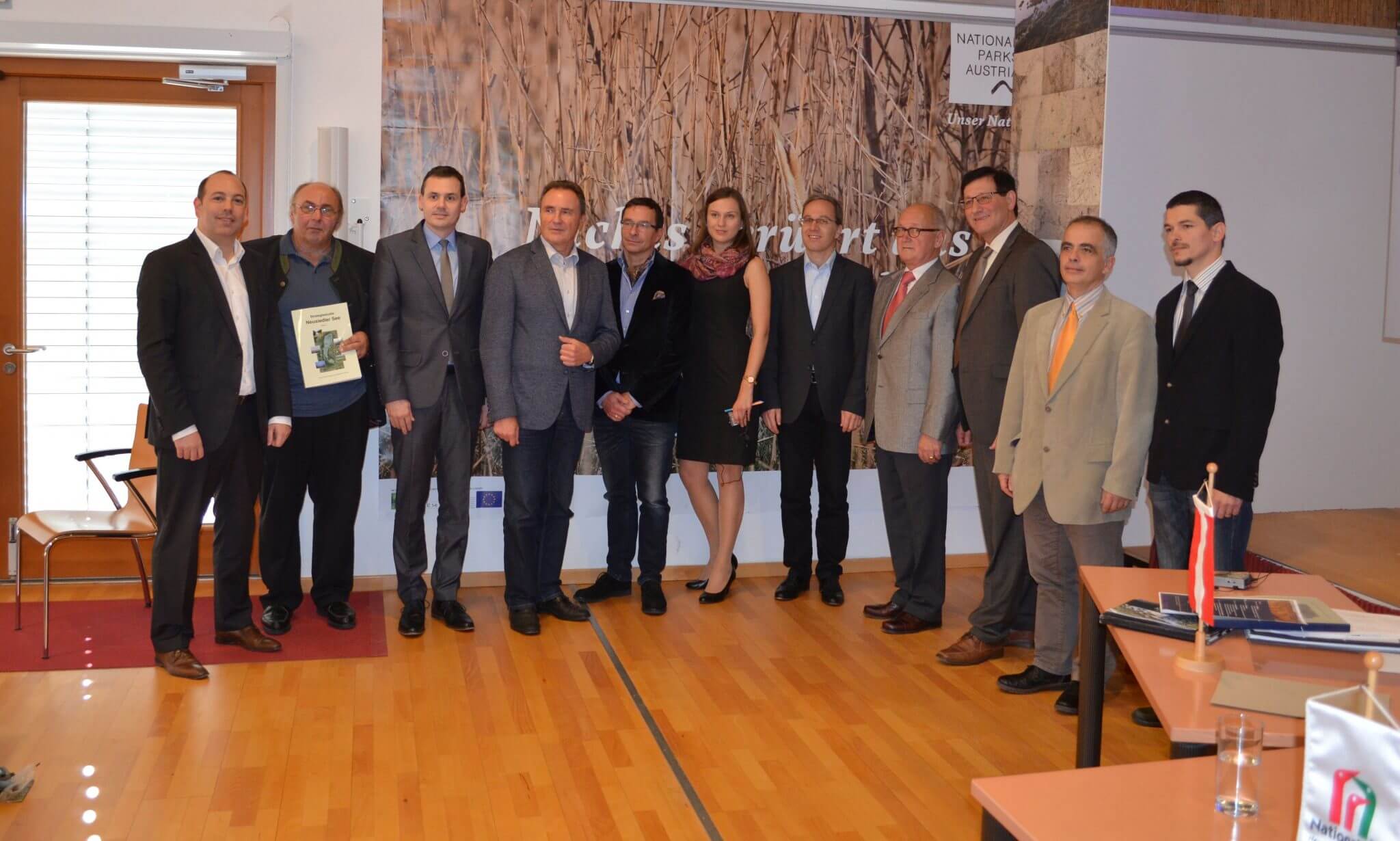
2017-2020 EU INTERREG project REBEN (Austria – Hungary)
The INTERREG project REBEN was an Austrian-Hungarian research project under the scientific lead of DWS Hydro-Ecology. Other contractors were the University of Technology in Vienna with the Institute for Water Quality, Resource Management and Waste Management (pollutants) and the Institute of Hydraulic Engineering and Hydraulic Modeling, the TB Schuster (online probes), a team of experts from Hungary (TU Budapest, Univ. Sopron) and mecca Consulting (administrative project management). The aim of the project was to create a water management plan that will help to preserve and maintain good water quality and good ecological and chemical status of the lake in the long term. The investigations included chemical and biological analyses, especially in the reed belt of Lake Neusiedl. The focus lay on the exploration of water exchange and the associated mass transfer processes between reed belt and open water.
Tasks: project lead, field work (sampling), hydrochemical, sedimentological and biological analyses, statistical data analysis and modelling
Client: Amt der Bgld. Landesregierung
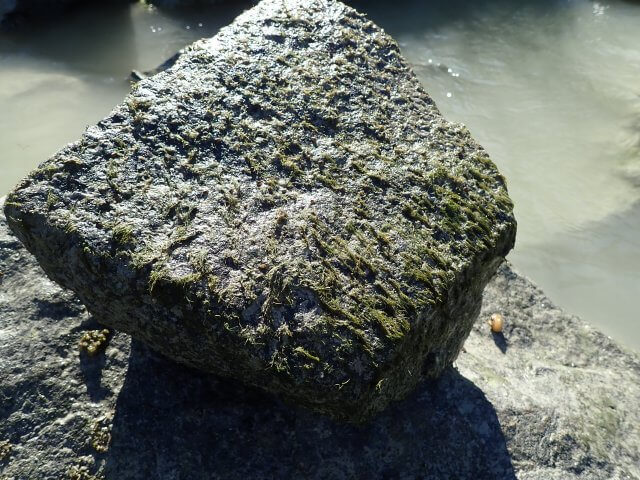
2019 Eco-AlpsWater
As part of the EU Interreg project “Eco-AlpsWater” DWS Hydro-Ecology surveyed the quality element phytobenthos in the littoral of two alpine lakes and in two alpine streams. The aim of the project was to expand and improve the conventional monitoring methods of the Water Framework Directive (WFD, Water Framework Directive 2000/60/EC) by using the latest DNA sequencing methods and the analysis of environmental DNA (eDNA). By analyzing eDNA from water samples, aquatic organisms can be identified and monitored without the need of “sampling”. In order to be able to successfully apply these modern methods of biomonitoring, calibration and comparison with existing methods are required.
Client: Research Institute for Limnology

2001, 2007, 2013, 2019 Joint Danube Survey
The Joint Danube Survey (JDS) is the largest river expedition of the world and has been carried out since 2001 in 6-years-intervals. Under the lead of the International Commission for the Protection of the Danube River (ICPDR), experts from all 14 countries of the Danube catchment area contribute to this great scientific enterprise. DWS Hydro-Ecology was involved in 2001 and 2007 with algal analyses (as sub-contractor of Univ.Prof. Dr. Martin Dokulil). In 2013, our employee Ulrich Donabaum MSc. participated in several weeks of field work, which led from Germany to the Romanian Danube delta. Our employee Dr. Daša Hlúbiková worked on benthic diatoms in co-operation with the Water Research Institute in Bratislava. In 2019, DWS Hydro-Ecology took the responsibility for the work on the quality elements phytoplankton and phytobenthos for Austria.
Tasks: Field work (2013, 2019), phytoplankton analyses (2001, 2007, 2013, 2019), phytobenthos analyses (2019)
Client: ICPDR / Federal Ministry for Sustainability and Tourism

2016 Literature study about Bacillus thuringiensis israelensis (Bti)
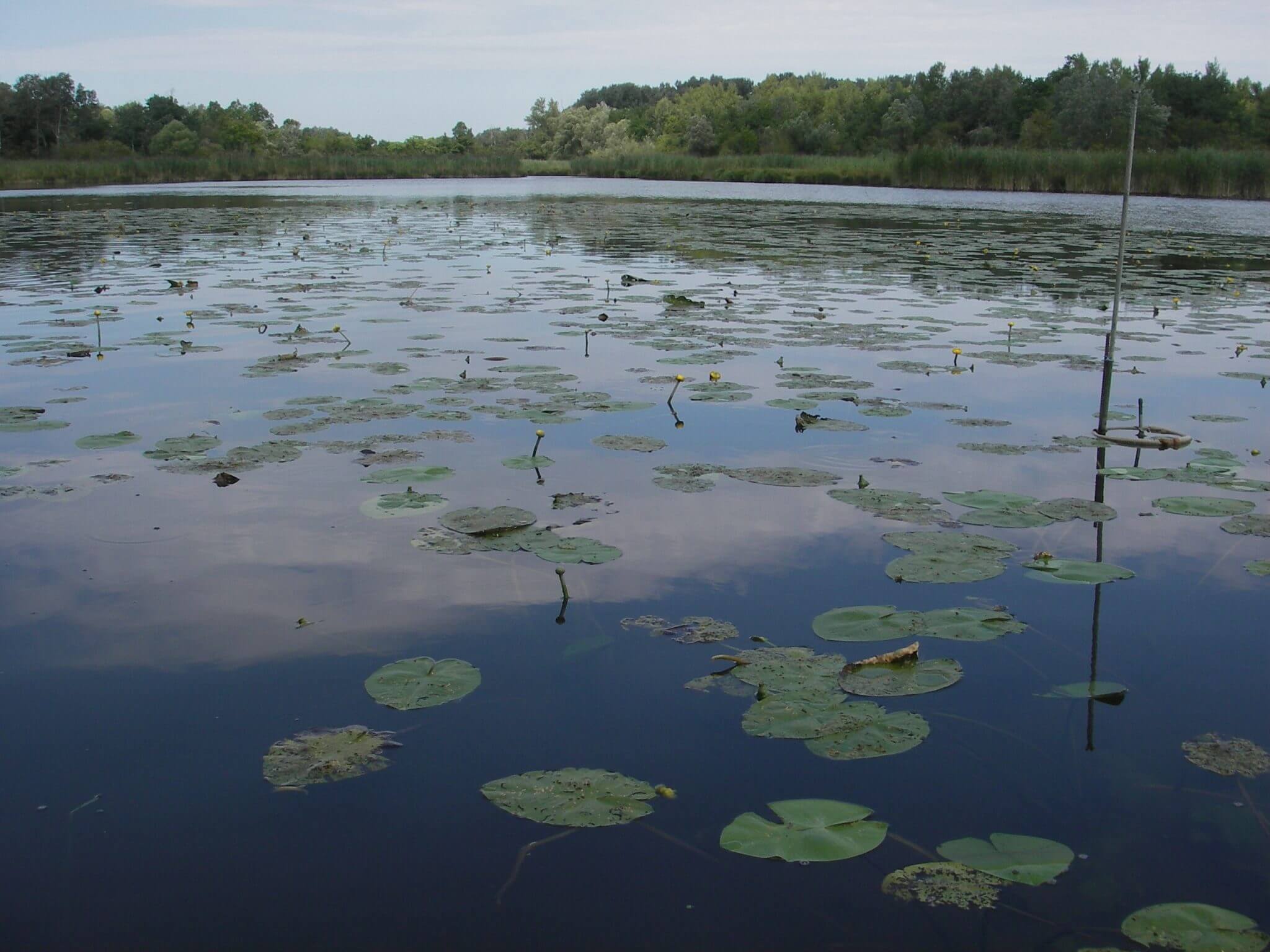
2009-2015 Connectivity of waterbodies in the Lower Lobau
From 2009 to 2015, the City of Vienna (MA45) commissioned several scientific and private institutions with the project “Gewässervernetzung (Neue) Donau – Untere Lobau (Nationalpark Donau-Auen)”. The aim of the investigations was to qualitatively and quantitatively estimate the effects of a dotation of the Lower Lobau from either the Danube or the New Danube including differing amounts of water. DWS Hydro-Ecology took over the coordination of the subject of Ecology. Cooperation partners were above others the Water Cluster Lunz, the Vienna University of Technology, the Water Group.
Tasks: Ecological coordination, field work, water body surveying, chemical and biological analyses (phytobenthos, phytoplankton)
Client: MA45 – Wiener Gewässer

2012 Literature study on chloride
Each year, abour 271,000 tons of road salt are spread in Austrian for the winter service. The salt reaches soil, groundwater and surface waters without being retained or decomposed. For several years, DWS Hydro-Ecology has been dealing with potential impacts of salt contamination on the ecological integrity of the our waters. Based on own investigations, we prepared an extensive literature study on chloride in surface waters, which was published by the former Ministry of Life and can be downloaded on the Ministry’s website (Link).
Client: Federal Ministry of Agriculture and Forestry, Environment and Water Management
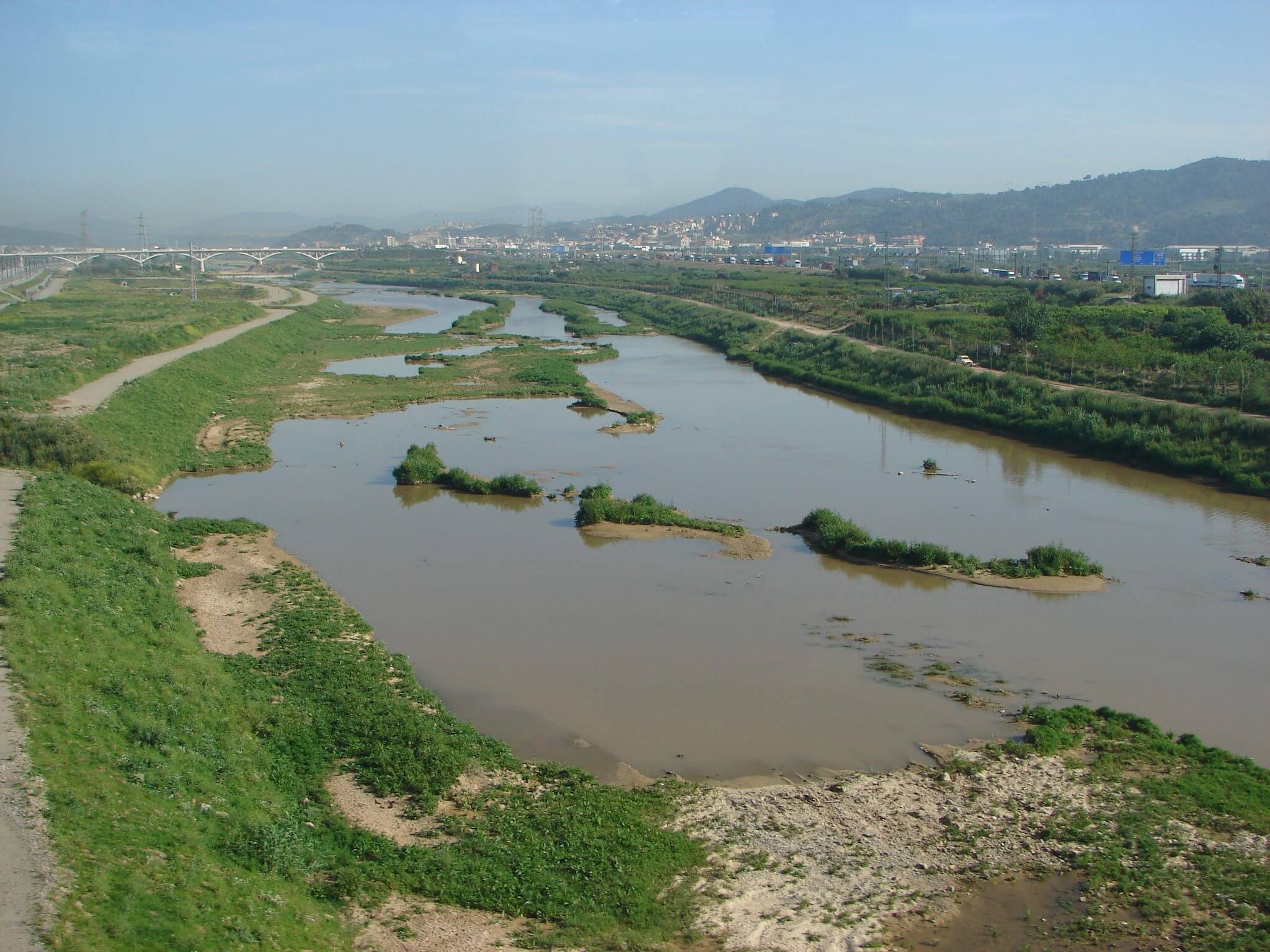
2005–2010 EU Research Project MODELKEY
MODELKEY was a project between February 2005 and January 2010 under the 5th EU Framework Program, led by Univ.Prof. Werner Brack from the Helmholtz Centre for Environmental Research (UFZ) in Leipzig. DWS Hydro-Ecology was one of 27 project partners from 14 European countries. The project aimed at developing models for the assessment and forecast of impacts of key pollutants in marine and freshwater ecosystems and biodiversity. Link
Tasks: Field work in the Czech Republic, laboratory analyses (macrozoobenthos), data analysis, scientific publications
Client: EU Commission
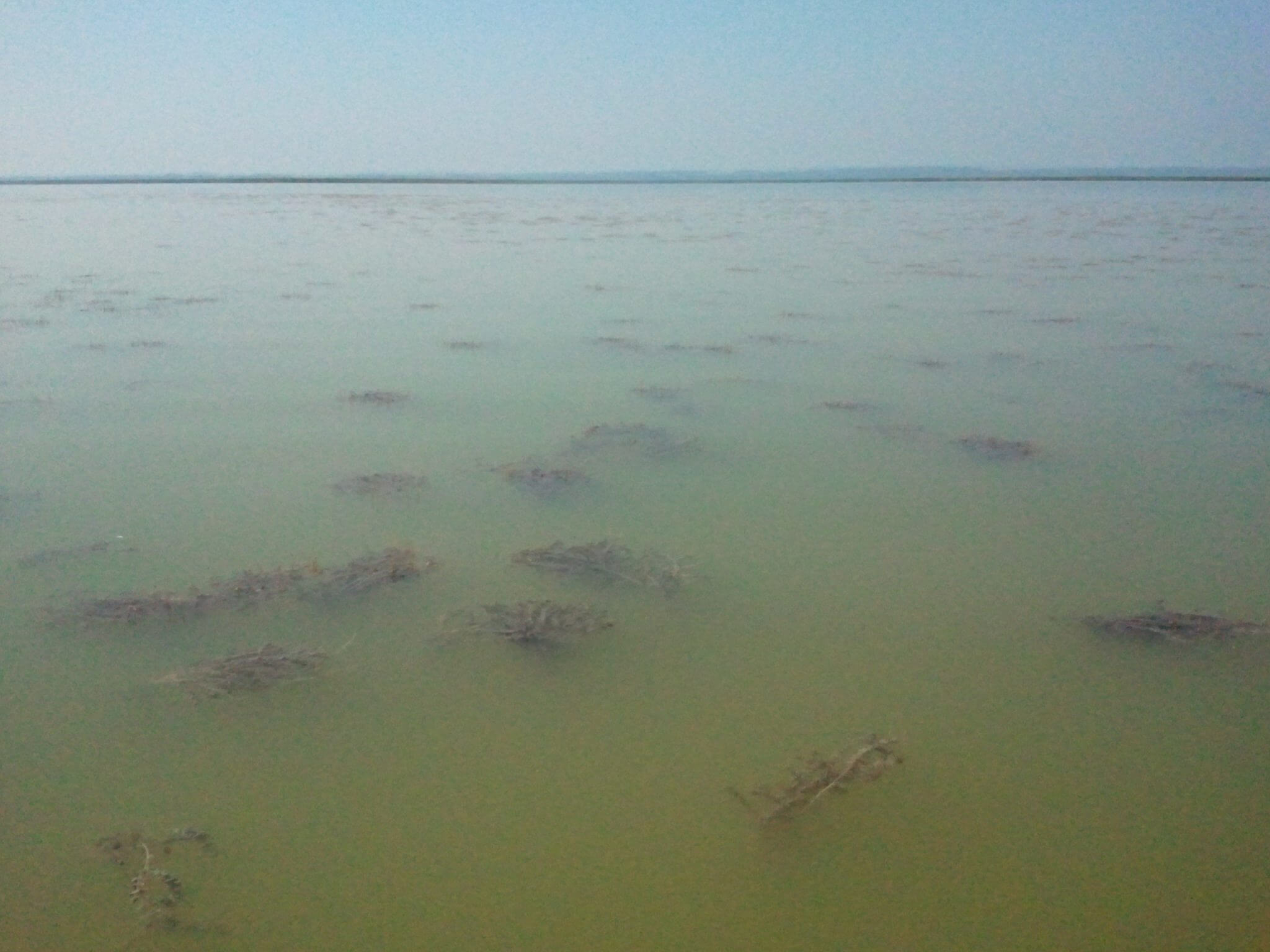
2009 Feasibility Study „Endowment of Lake Neusiedl with water from the Rába river“
Options of endowment of Lake Neusiedl with alien water have been discussed for a long time. In 2009, the Austrian-Hungarian Waser Commission instructed the TU Vienna (under the lead of Univ.Prof. Dr. Matthias Zessner-Spitzenberg) with a research study on possible impacts of a water supply from the Rába river into the lake. The study was carried out in co-operation with Hungarian colleagues (TU Budapest). The tasks of DWS Hydro-Ecology within this project were to calculate matter balances for Lake Neusiedl (chloride, phosphorus, nitrogen). The results were presented in a Technical Report and a scientific publication.
Tasks: Statistical data analyses and modelling of matter balances for Lake Neusiedl
Client: Technical University Vienna

2004-2005 EU Research Project PEPCY
Aim of the EU project PEPCY „Toxic and other bioactive peptides in cyanobacteria“ was to improve the knowledge about toxic blue-green algae. The contractor was a consortium of 10 institutions from 8 European countries, among them the Austrian Academy of Sciences. As a sub-contractor, DWS Hydro-Ecology carried out chemical analyses of algal pigments by using HPLC (Link)
Client: Austrian Academy of Sciences (Dr. Rainer Kurmayr)

2002-2005 EU-Project STAR
The follow-up project of AQEM, the STAR project (STAR – Standardisierung der Fließgewässer-Bewertung: Rahmenmethode für die Interkalibrierung der Ergebnisse ökologischer Untersuchungsmethoden im Rahmen der Umsetzung der EU-Wasserrahmenrichtlinie), was conducted between 2002 and 2005 under the direction of the University of Natural Resources and Life Sciences (Univ.Prof. Dr. Otto Moog). 14 project partners from 11 EU countries participated. The DWS Hydro-Ecology was commissioned by the University of Natural Resources and Life Sciences for taxonomic work (Phytobenthos). Link
Tasks: Taxonomic analyses
Client: University of Natural Resources and Life Sciences, Vienna

2000–2002 EU Research Project AQEM
The project AQEM was carried out 2000-2002 for the development and intercalibration of ecological classification methods according to the EU Water Framework Directive. Austria was part of the project with the University of Agriculture as one of 12 project partners from 7 EU countries. As a subcontractor, DWS Hydro-Ecology (formerly Donabaum & Wolfram) carried out taxonomic works. The goal of the project was the development and testing of an integrated assessment system for the ecological quality of streams and rivers throughout europe using benthic macroinvertebrates. Link
Tasks: Taxonomic works
Client: University for Agriculture, Vienna (Univ.Prof. Dr. Otto Moog)
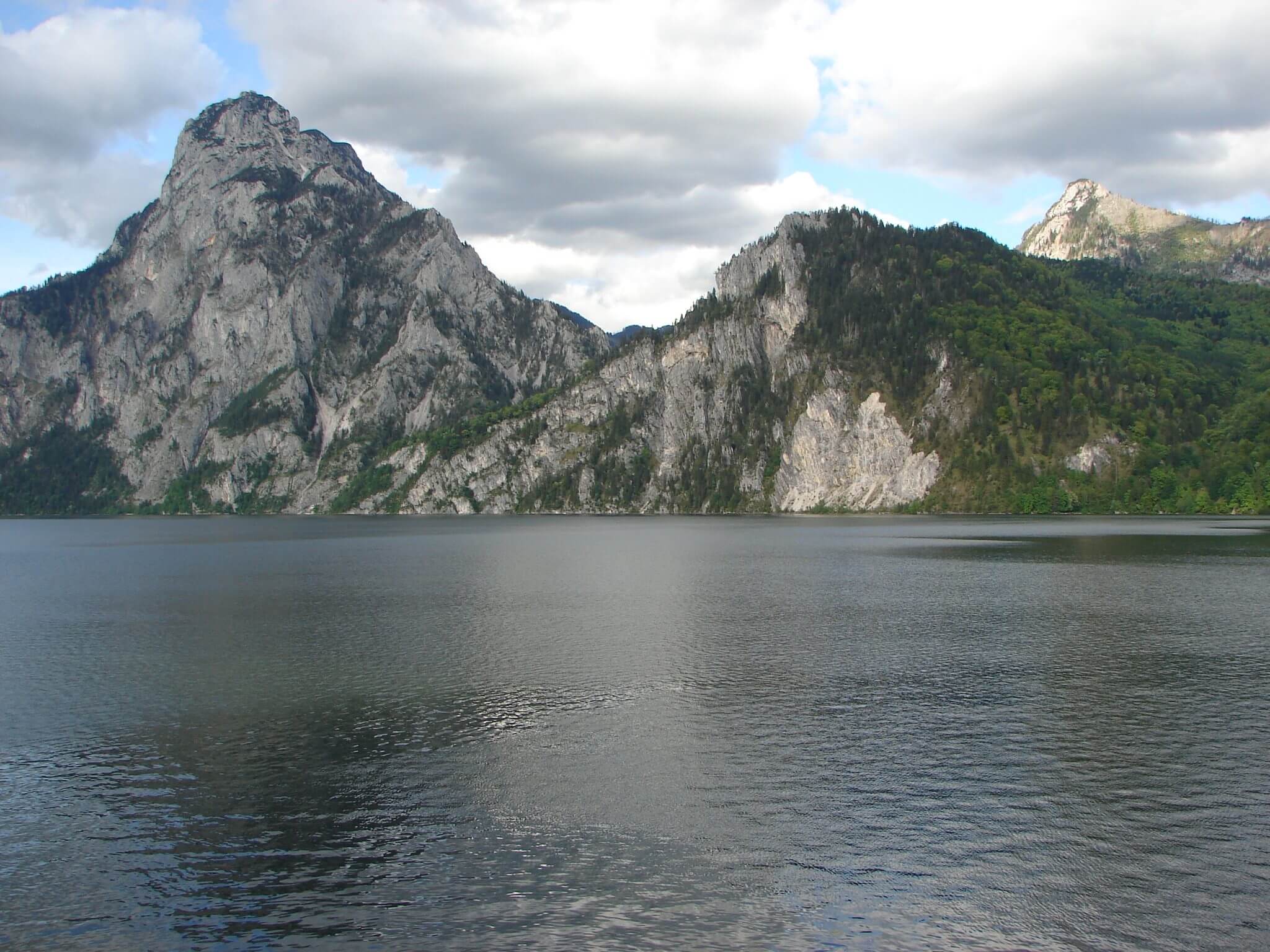
1997–2000 Traunsee Study of the Austrian Academy of Sciences
The Traunsee study of the Austrian Academy of Sciences was a project for the province of Upper Austria and aimed at investigating the impact of industrial tailings on the deepest lake in Austria. The results were published in a special volume of the Journals „Water, Air and Soil Pollution: Focus“. DWS Hydro-Ecology (formerly Donabaum & Wolfram OEG) carried out field and laboratory works as well as statistical analyses.
Tasks: Field work (sampling of macroinvertebrates), taxonomic analyses (zoobenthos), data analysis and publication
Client: Austrian Academy of Sciences, Univ.Prof. Dr. Uwe Humpesch
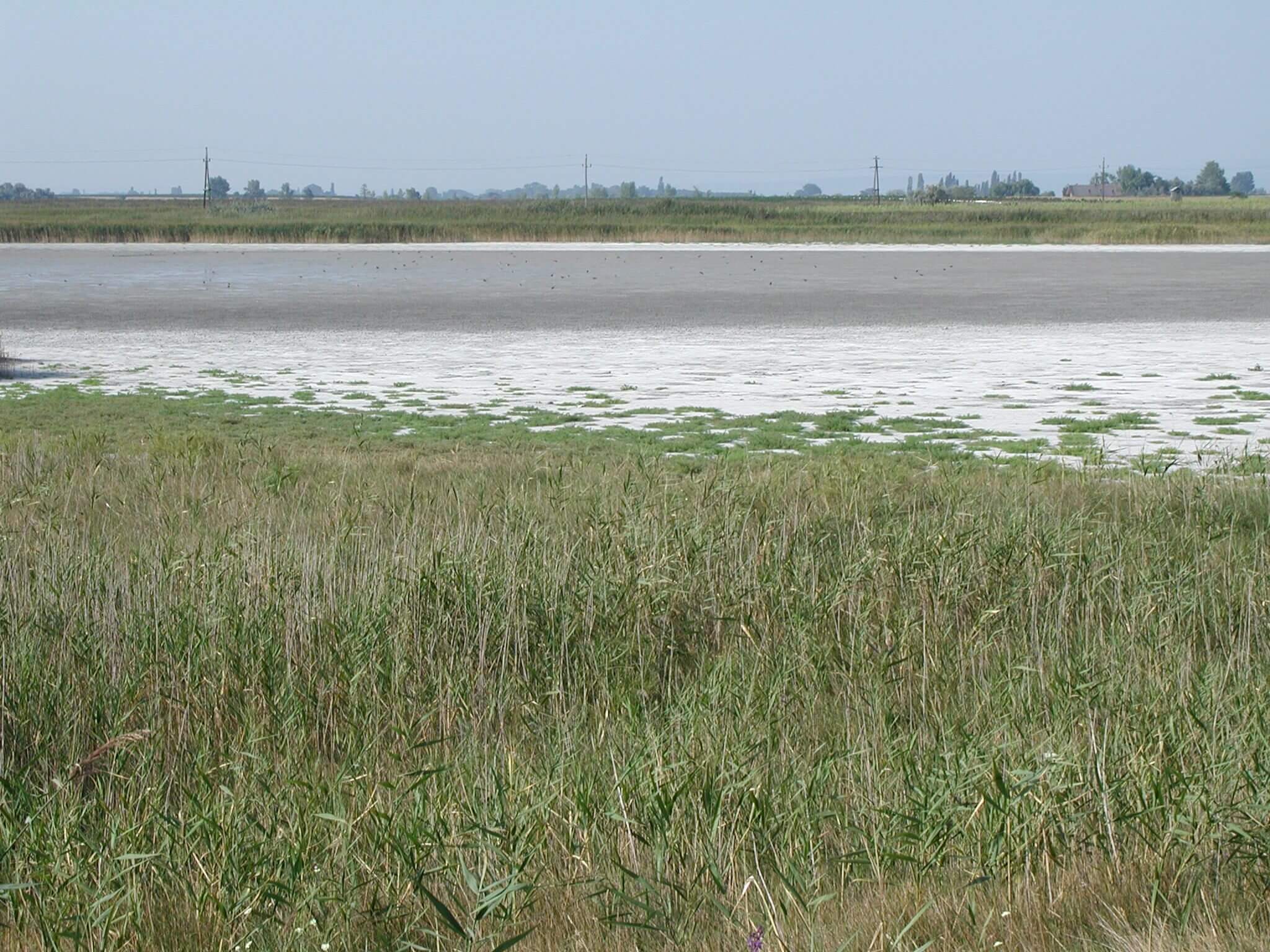
1996-1998 Investigation of salt pans in the national park Neusiedler See – Seewinkel
The soda pans in the Seewinkel area in Borthern Burgenland are unique in Central Europe and belong to the national park Neusiedler See – Seewinkel since 1993. Longterm scientific work and monitorig are cornerstones of the research in the conservation zone and the protected central part of the national park. From 1996 to 1998, DWS Hydro-Ecology (formerly Donabaum & Wolfram OEG) investigated 20 salt pans regarding their chemistry as well as their assemblages of benthic invertebrates and algae.
Tasks: Project lead, field work, chemical analyses, microscopy (macrozoobenthos, algae), data analyses and scientific publication
Client: Nationalpark Neusiedler See – Seewinkel

